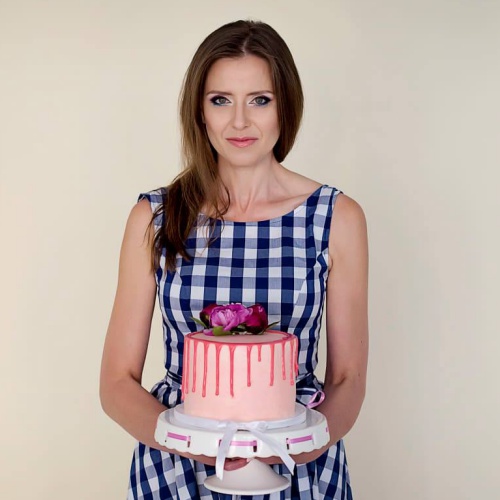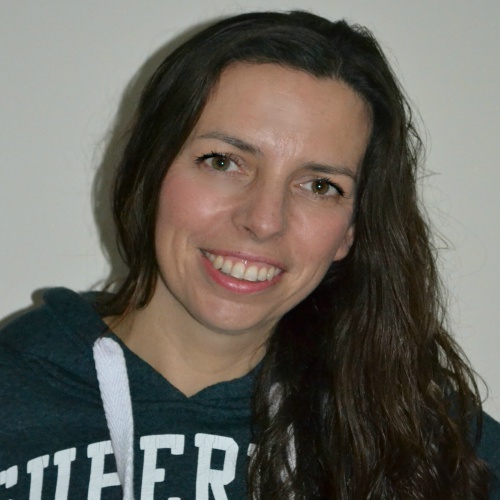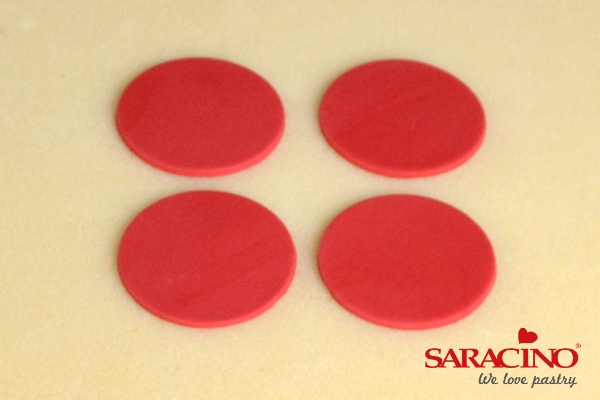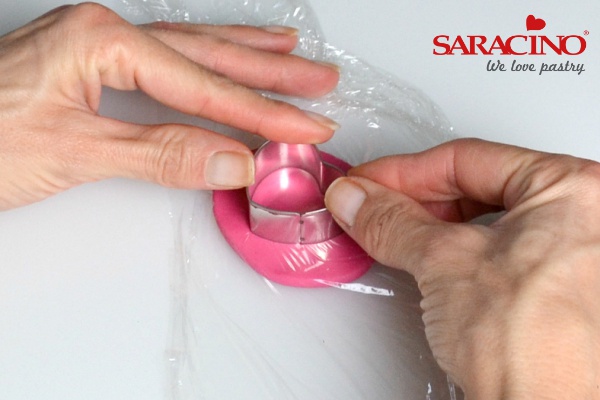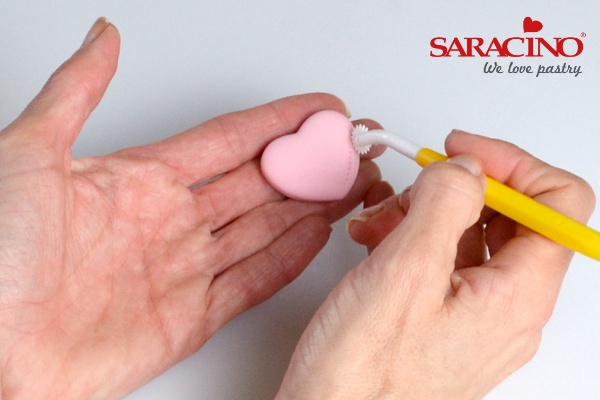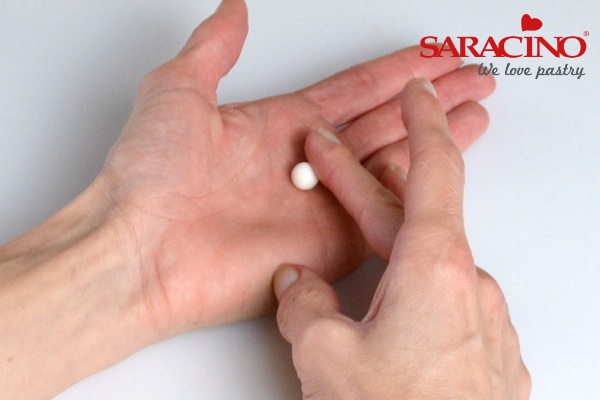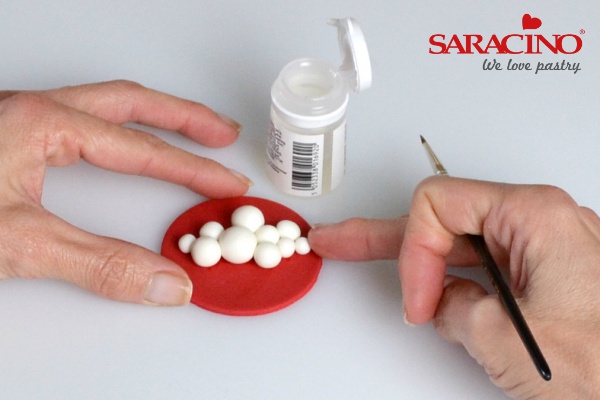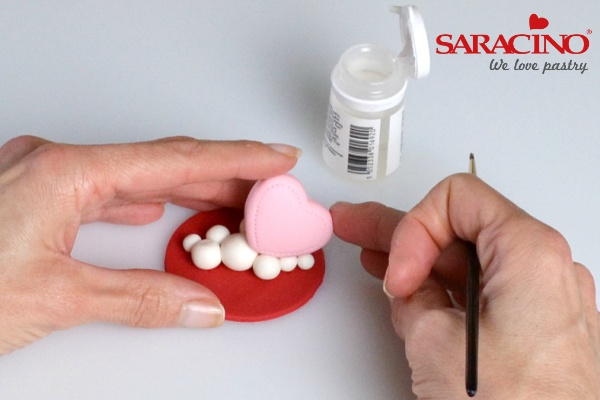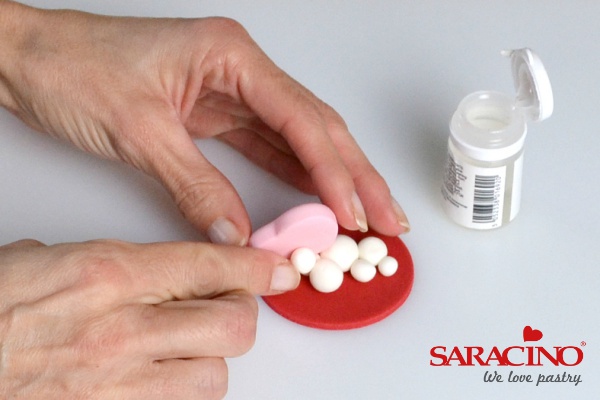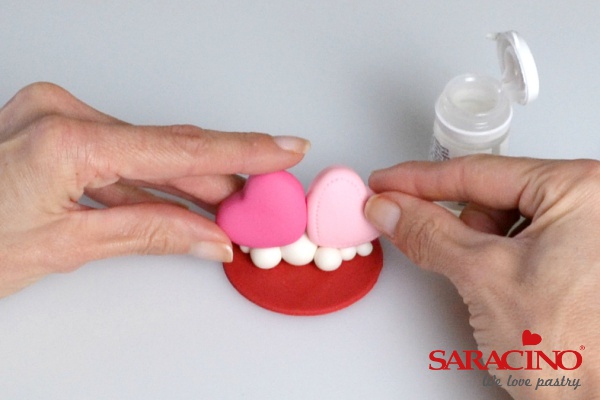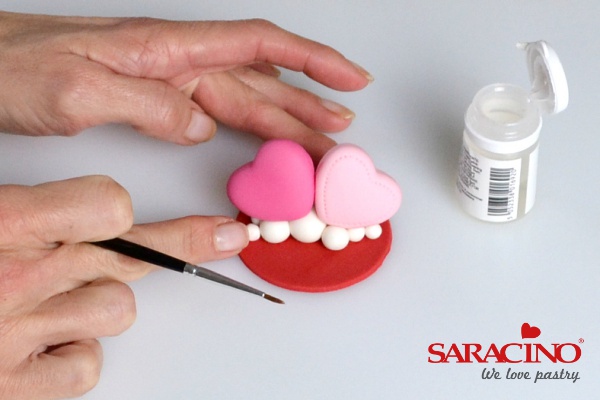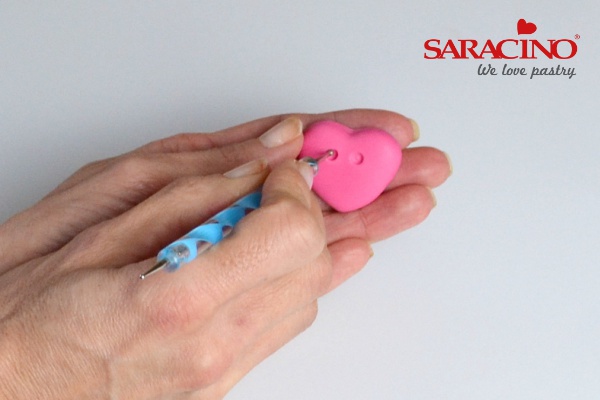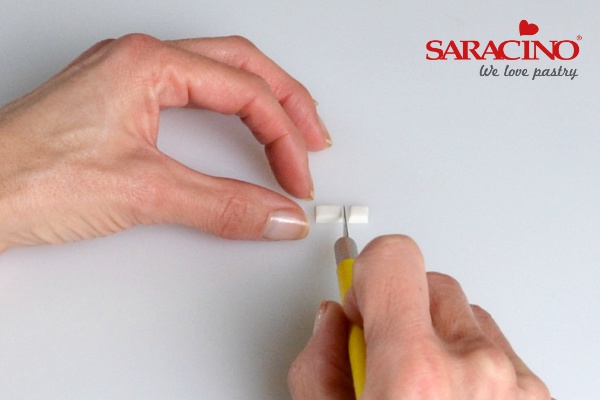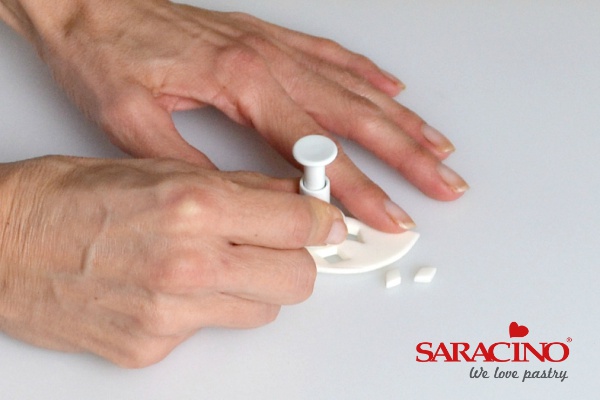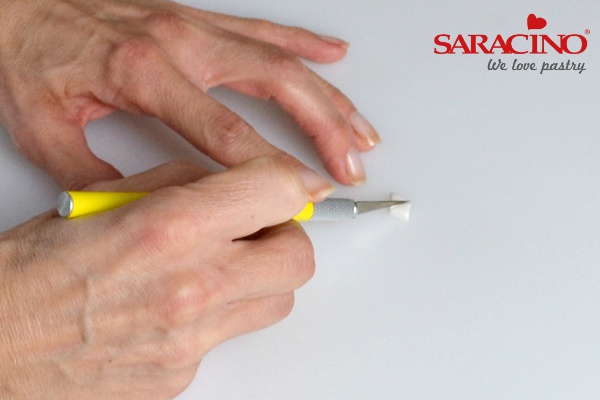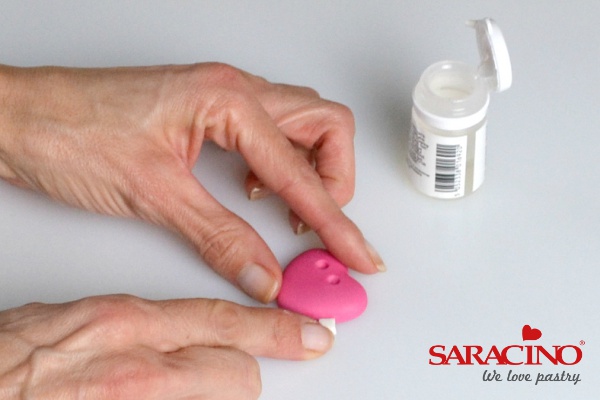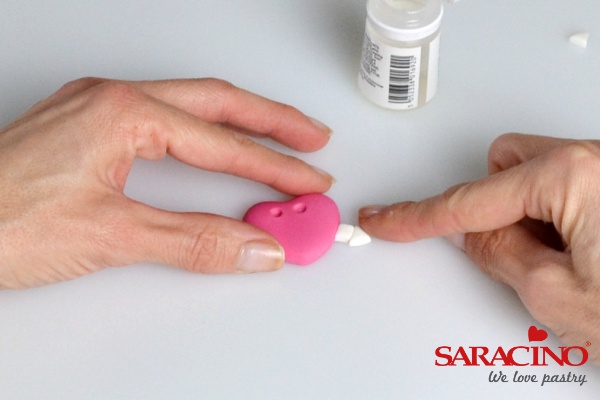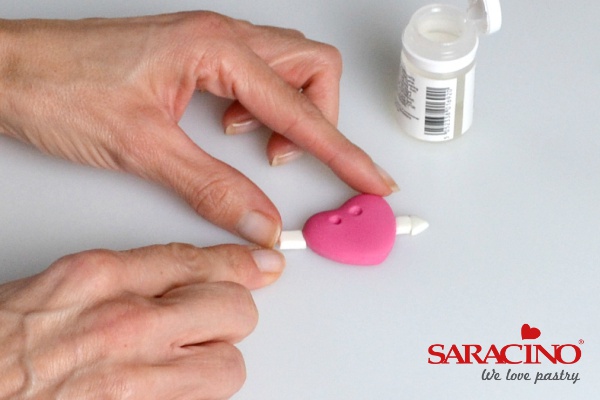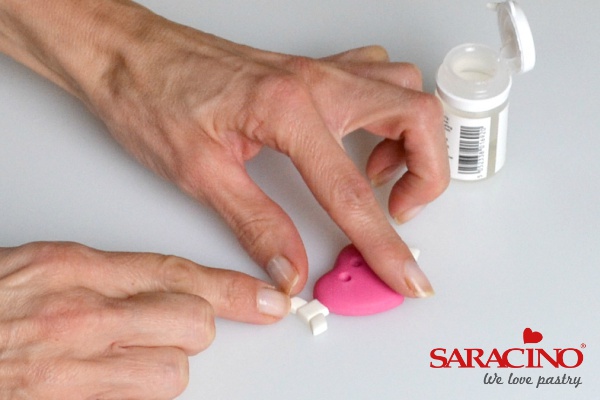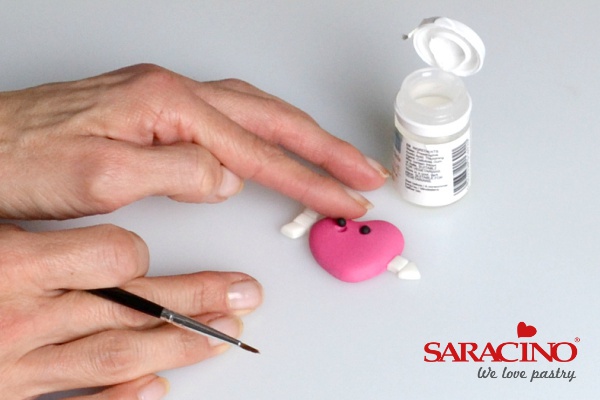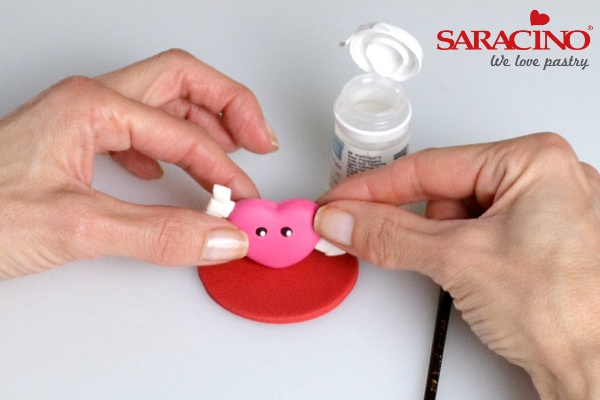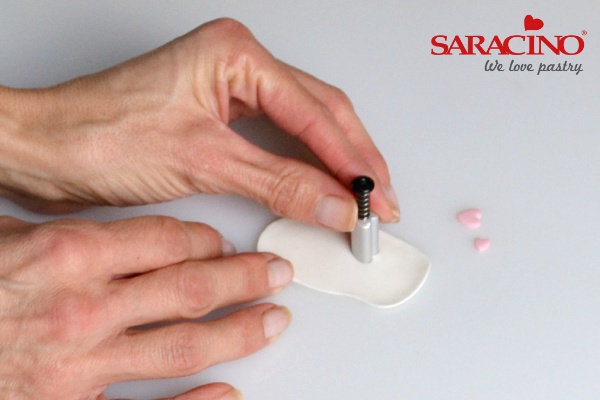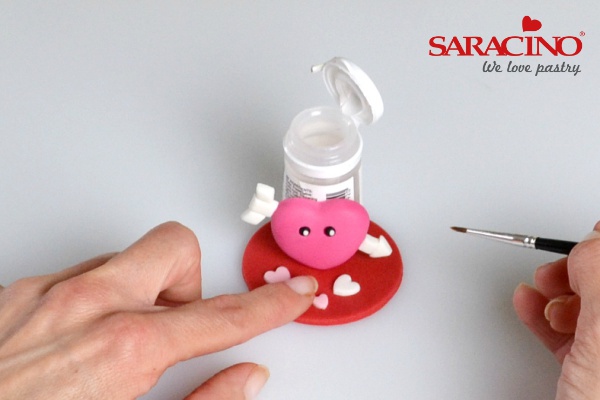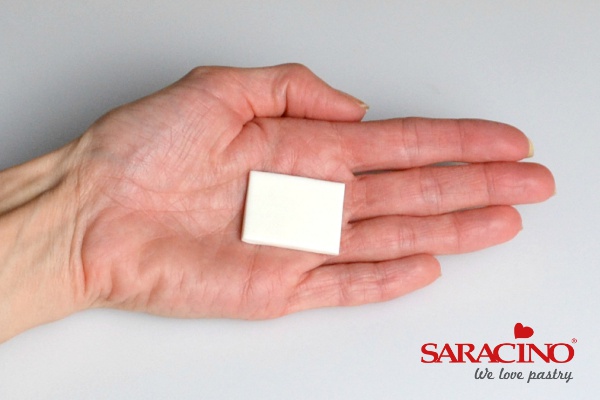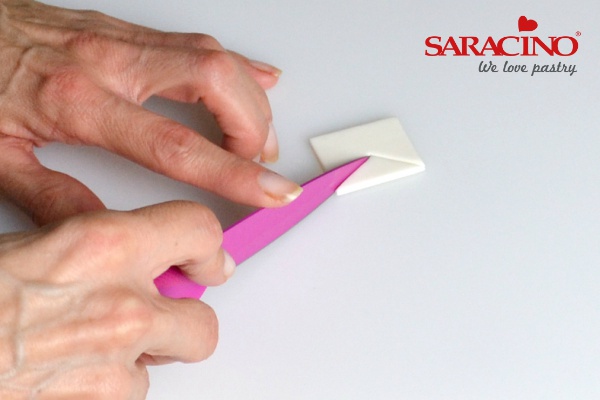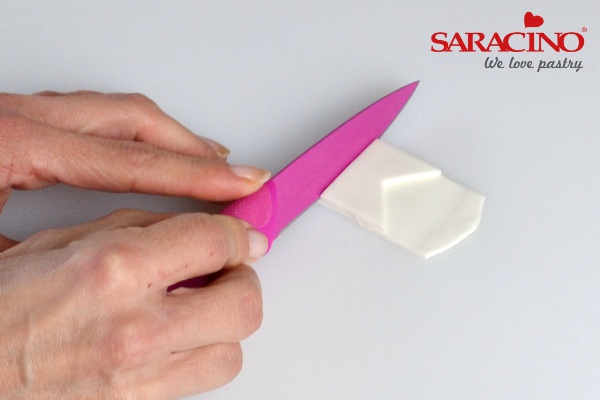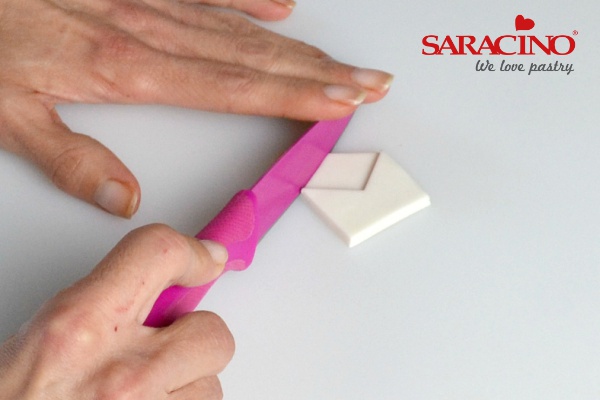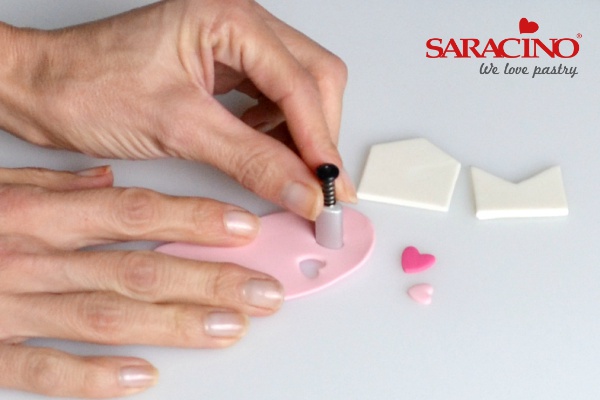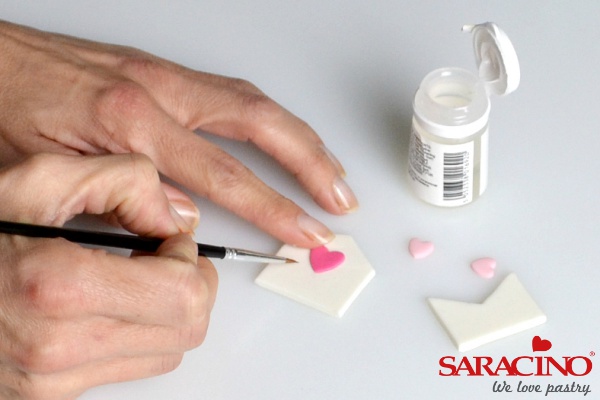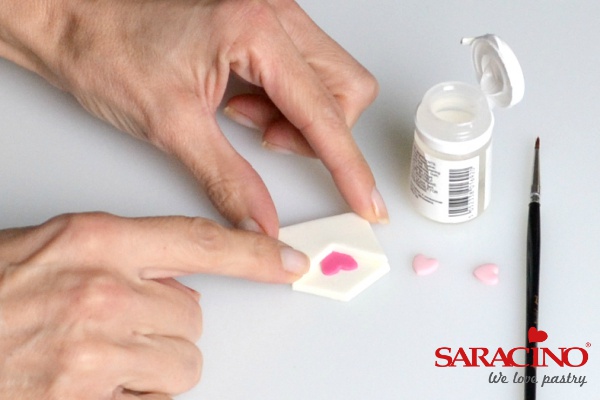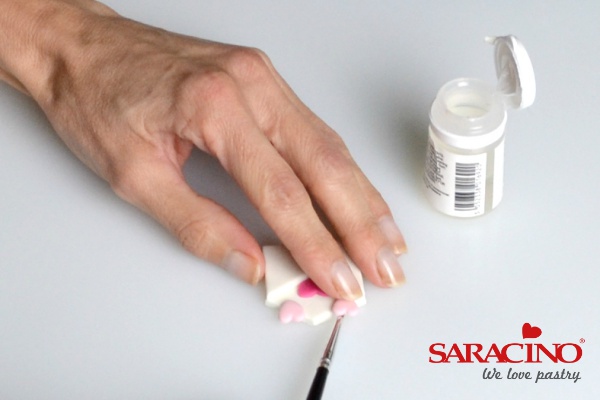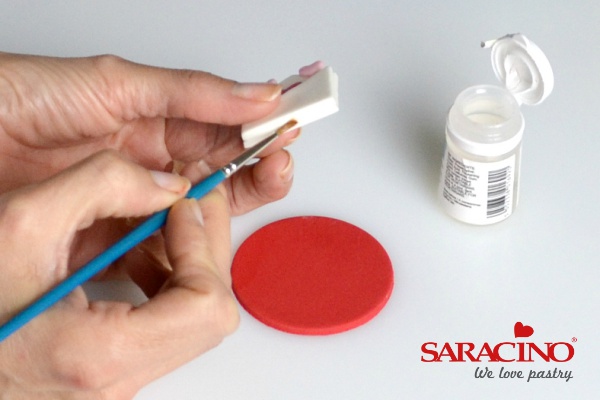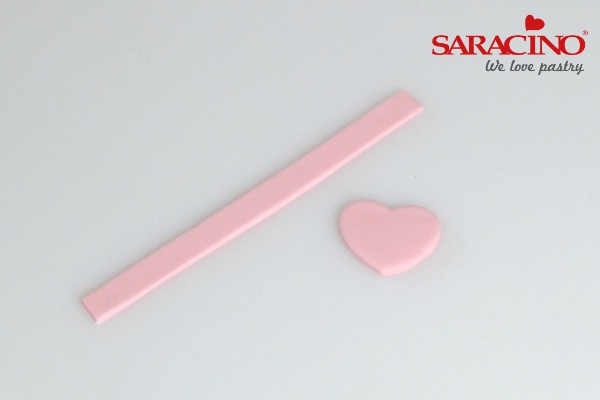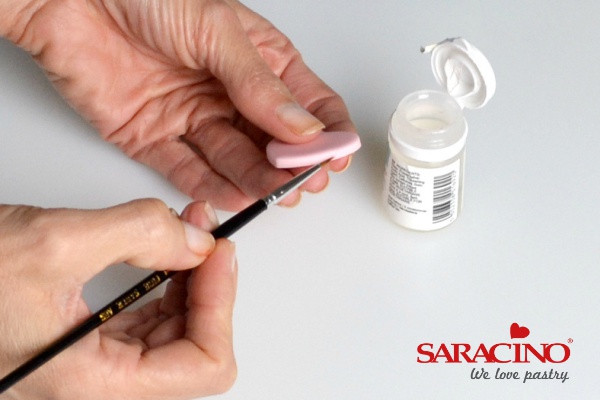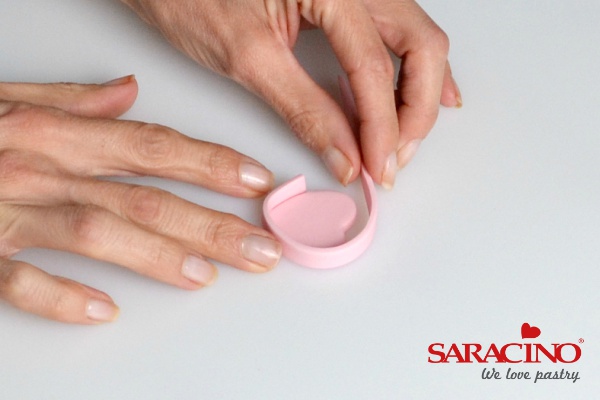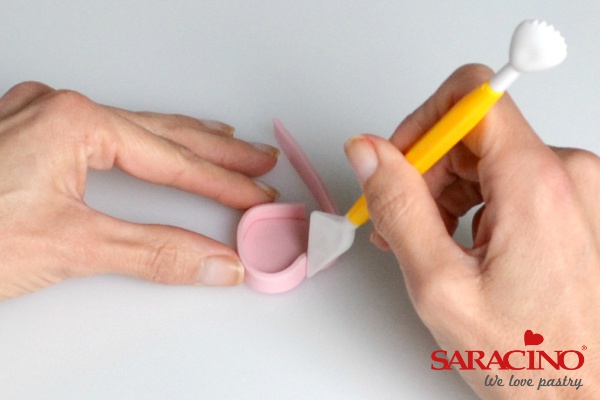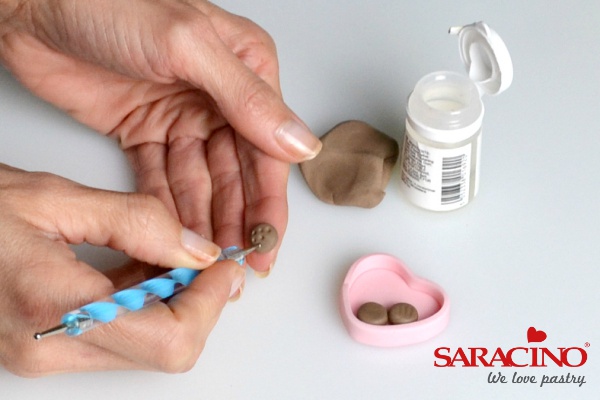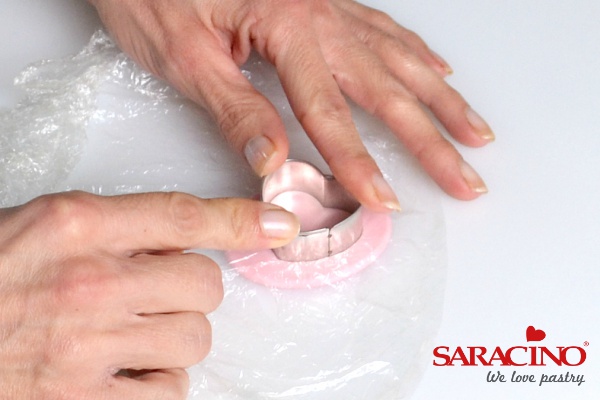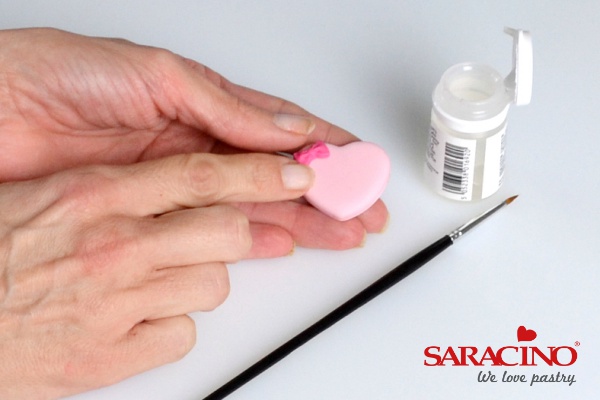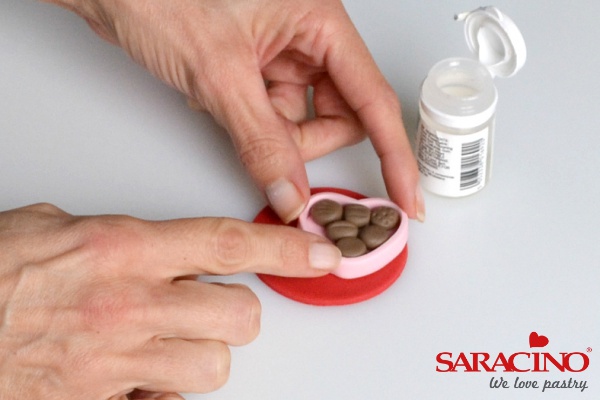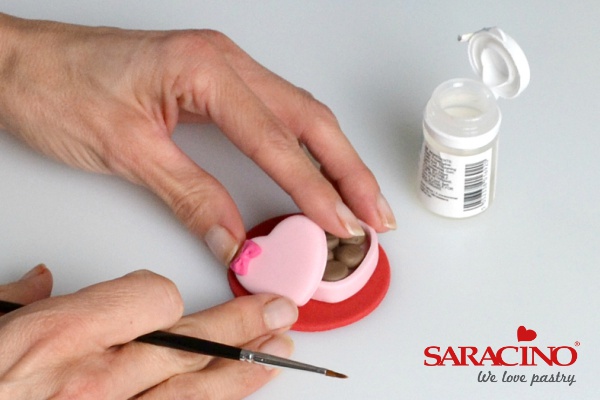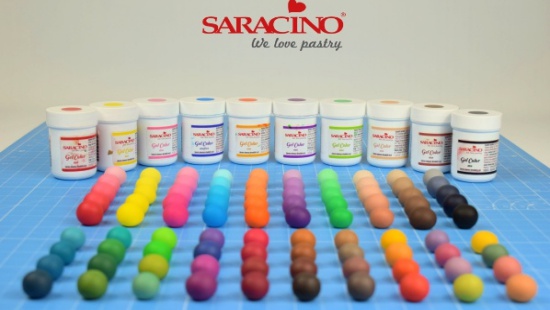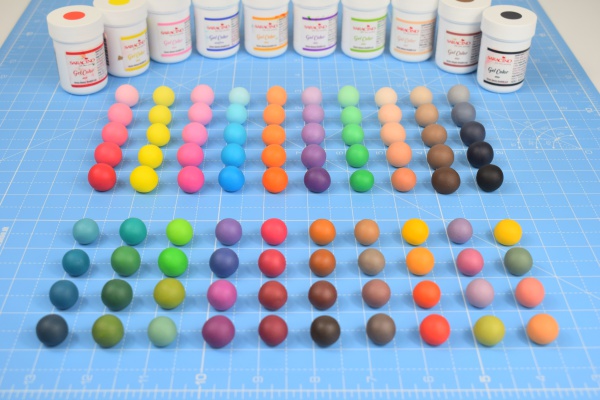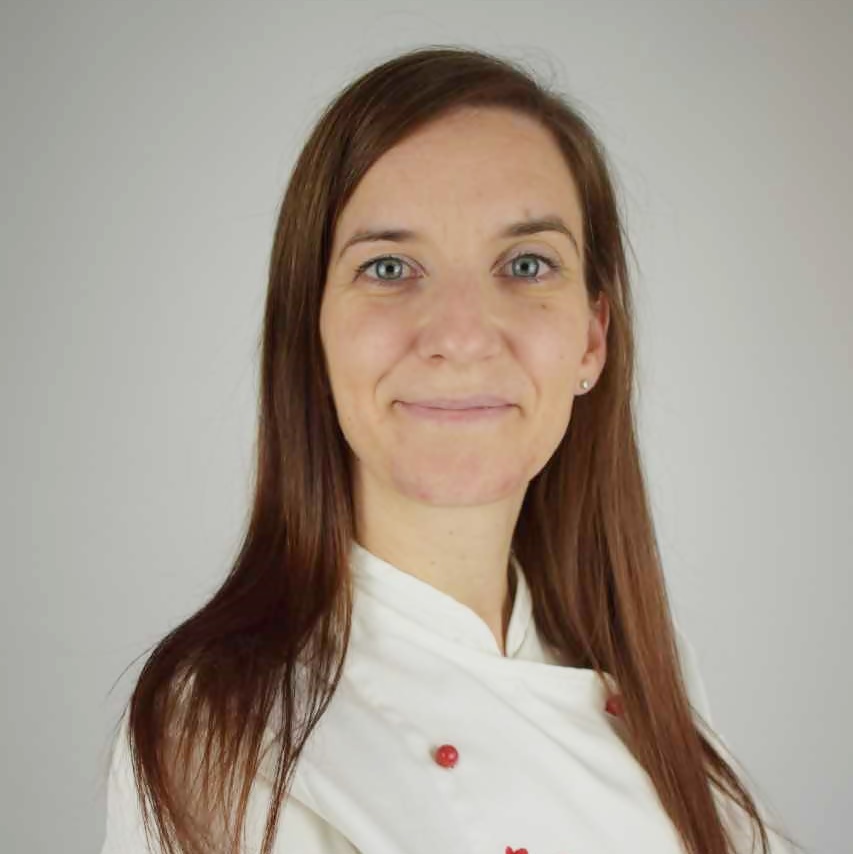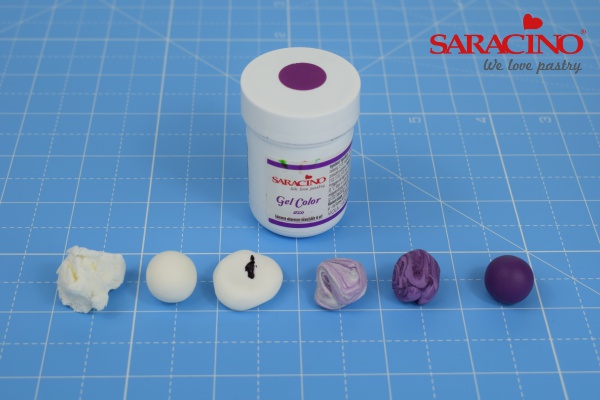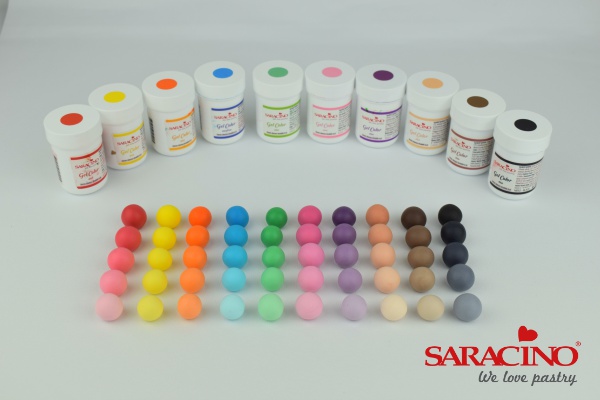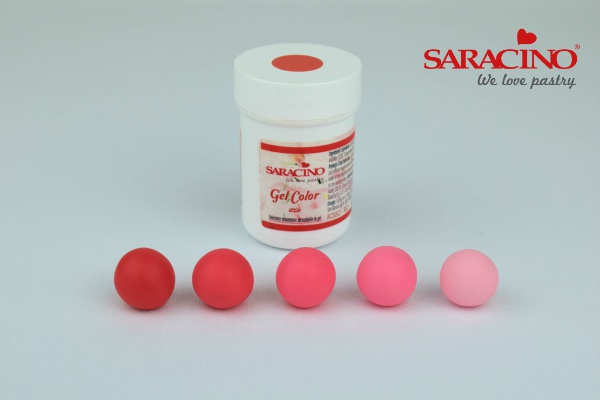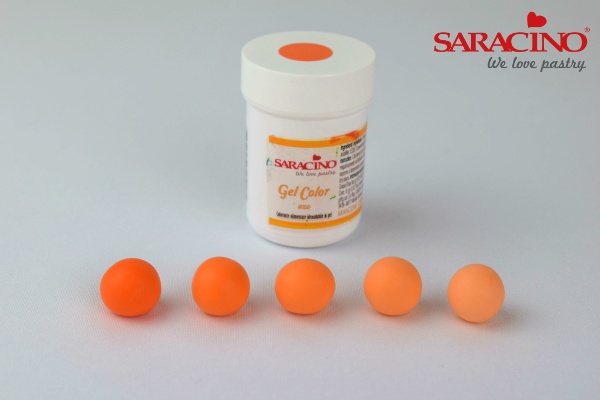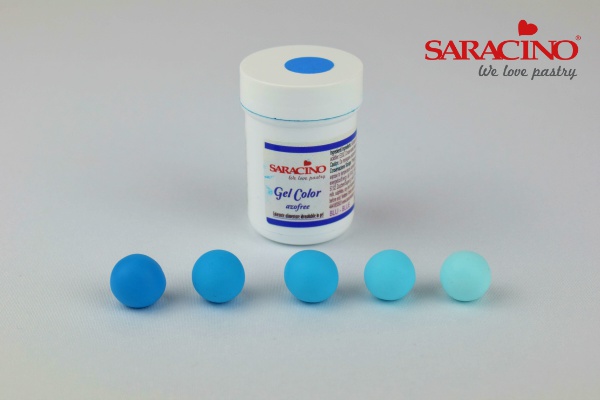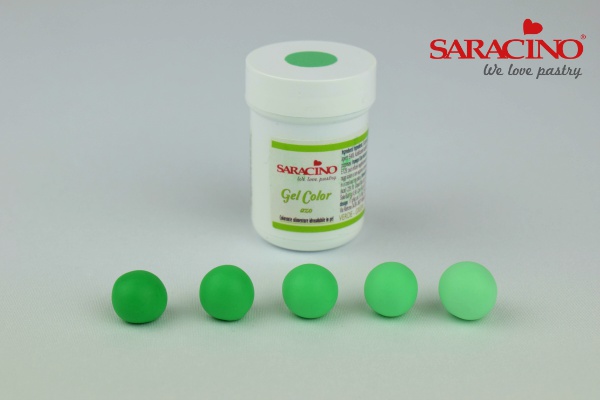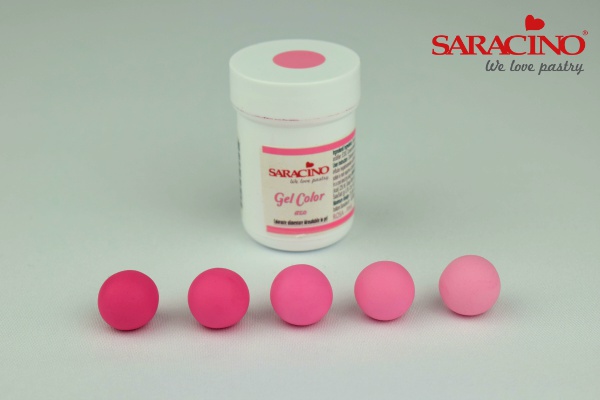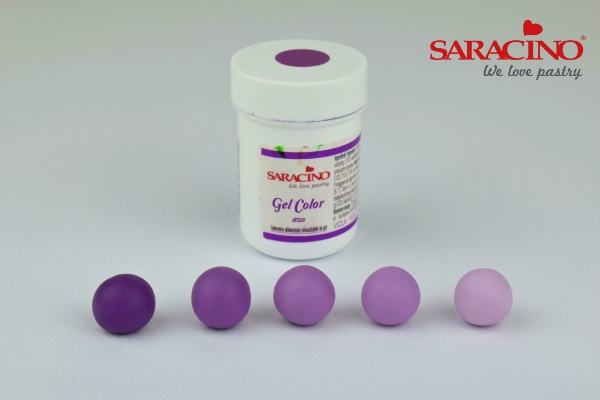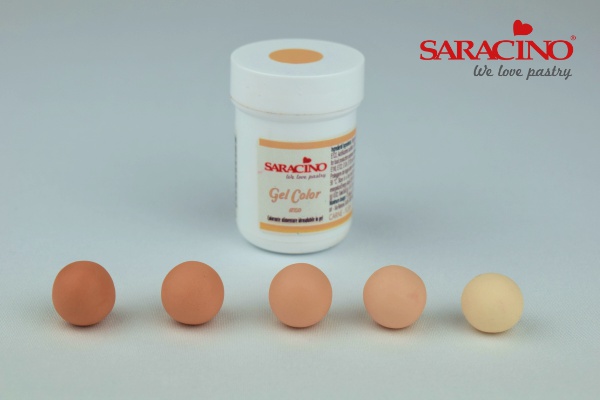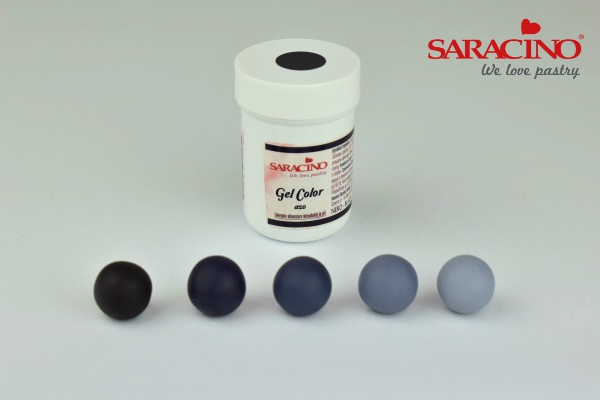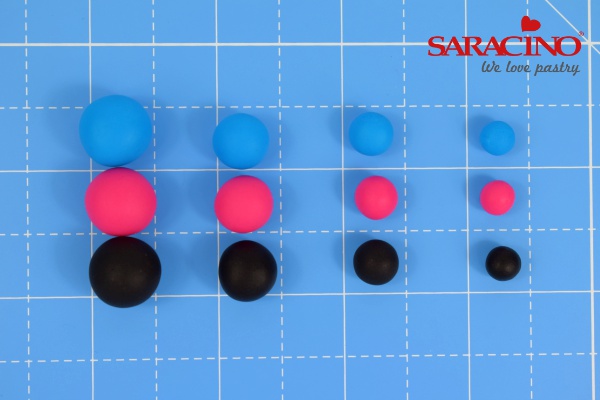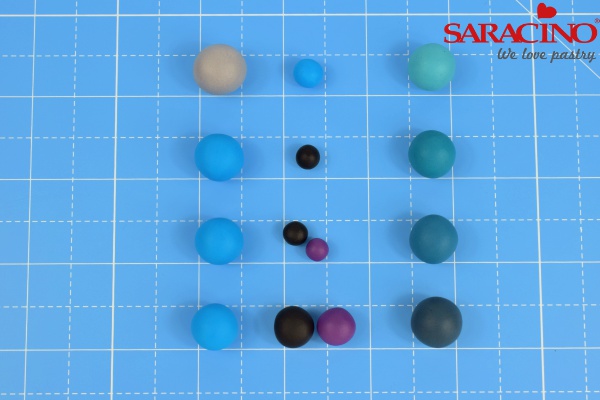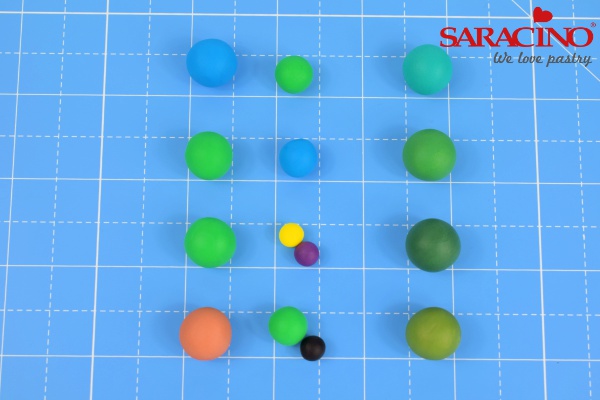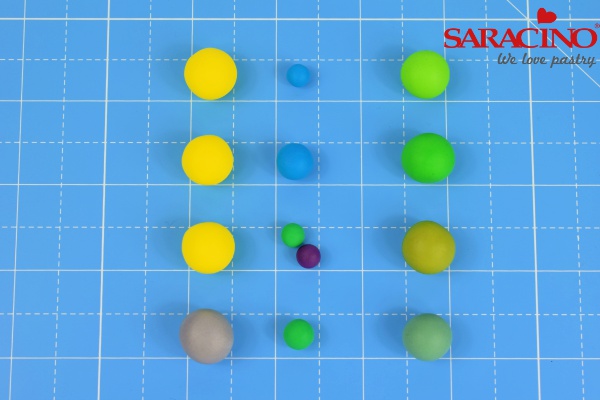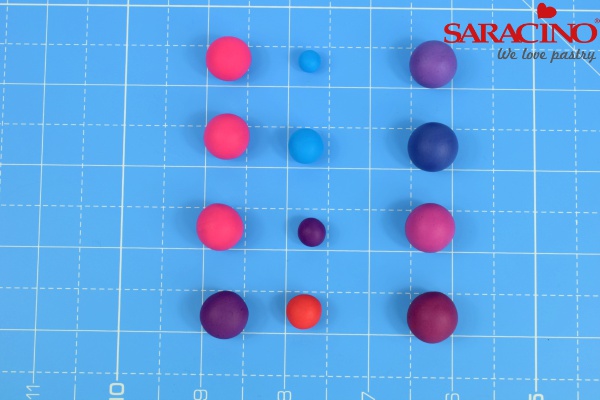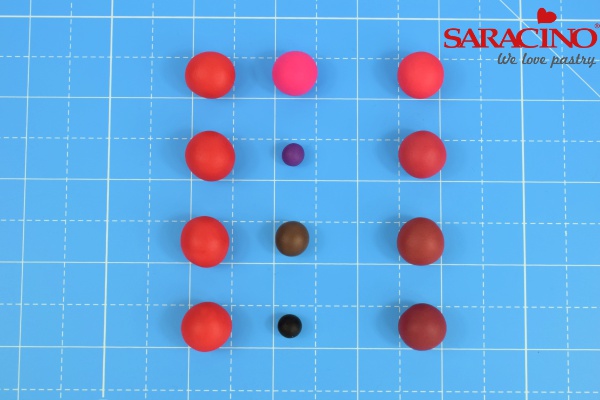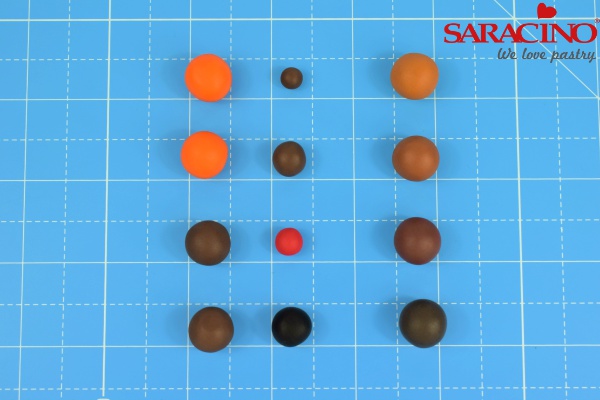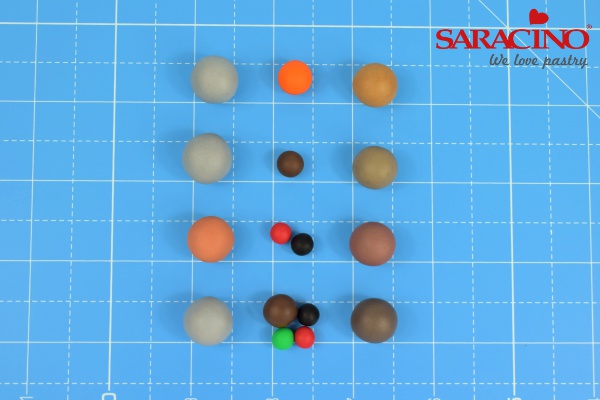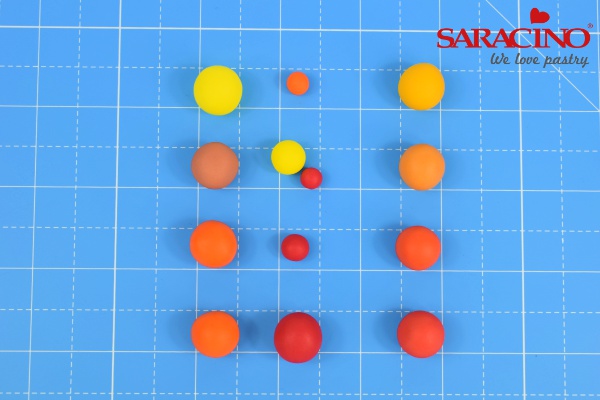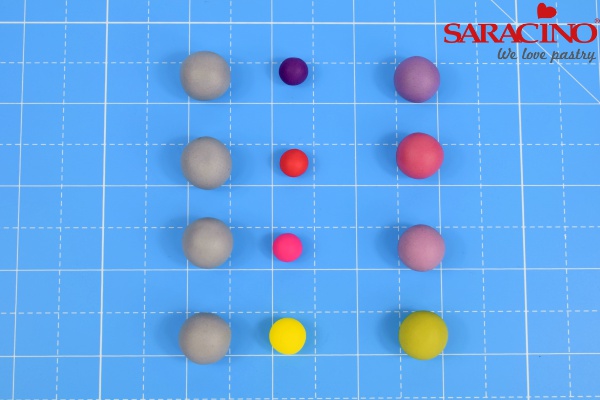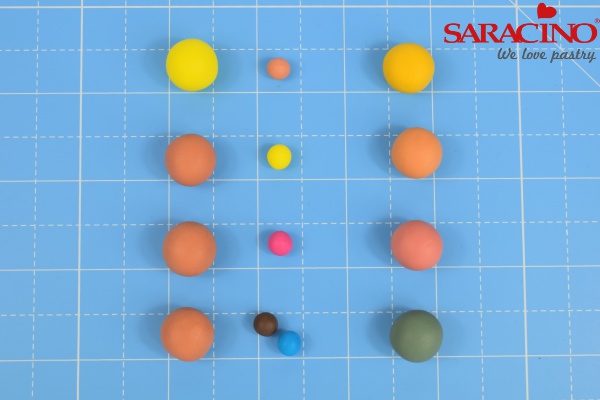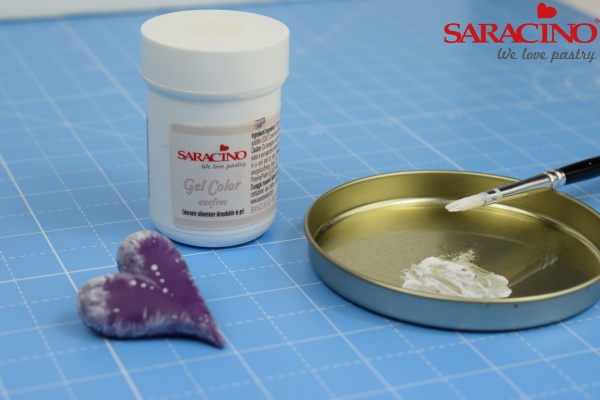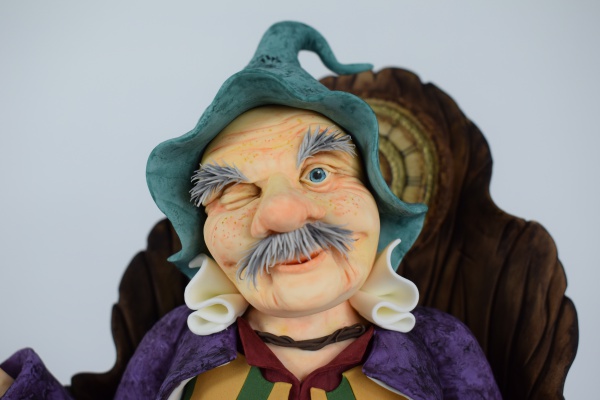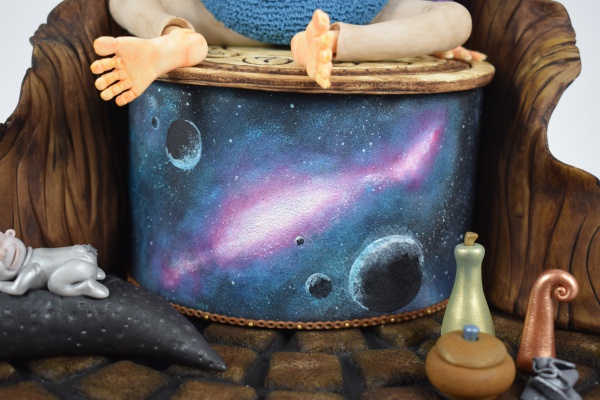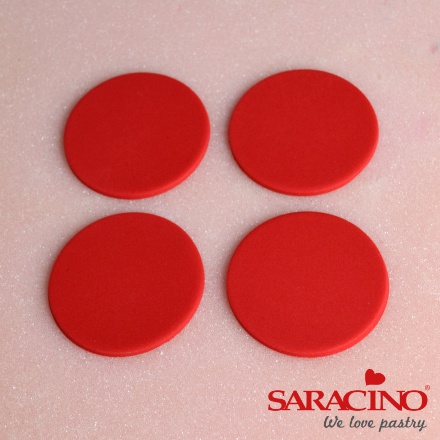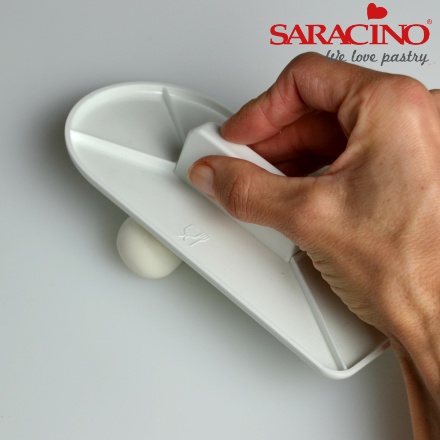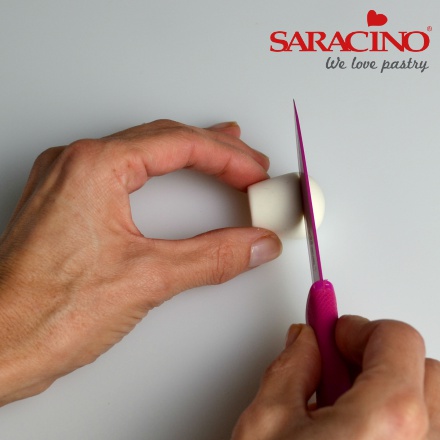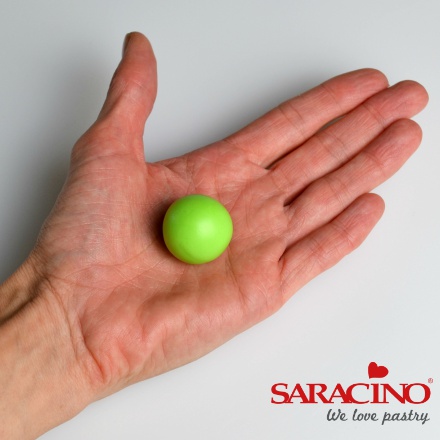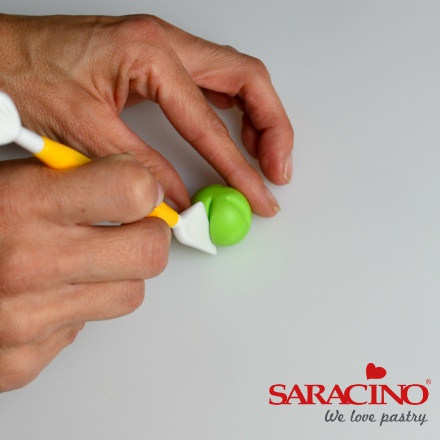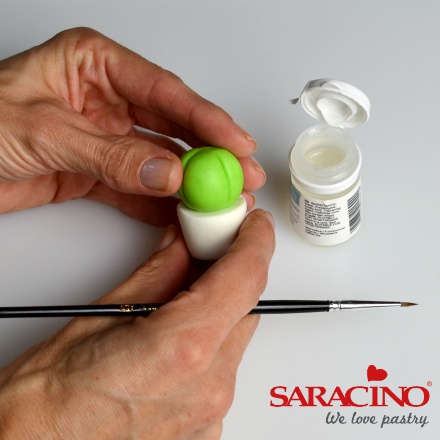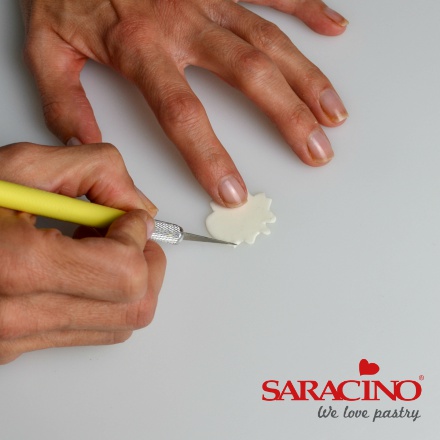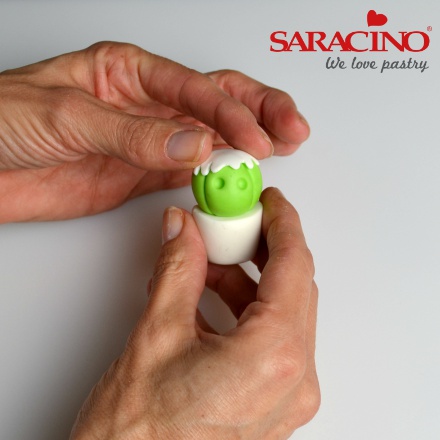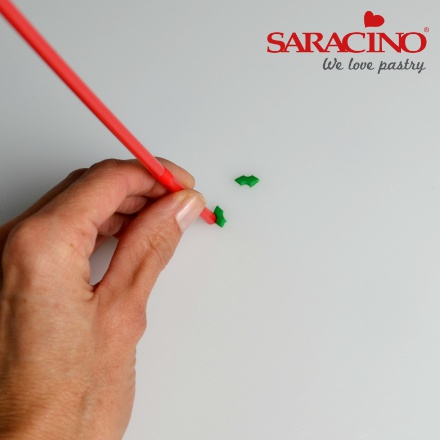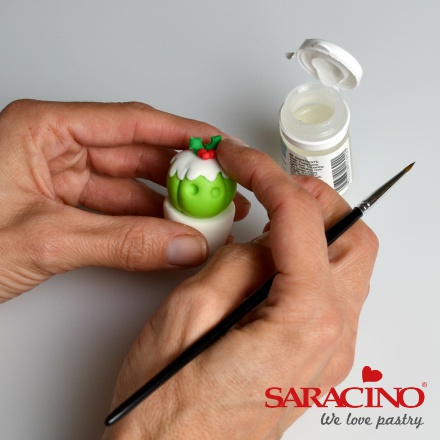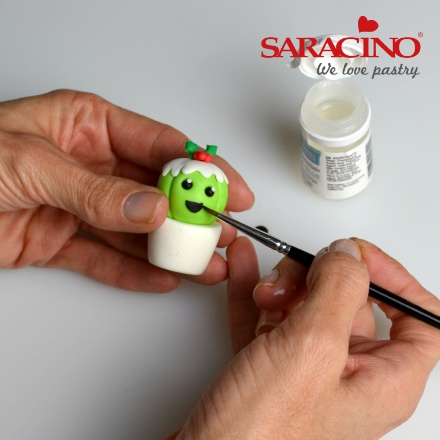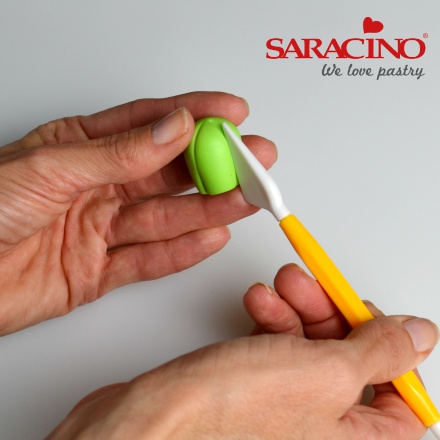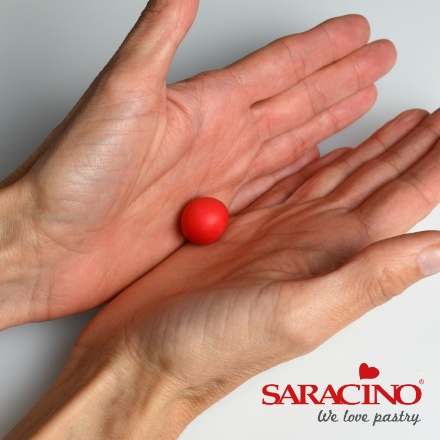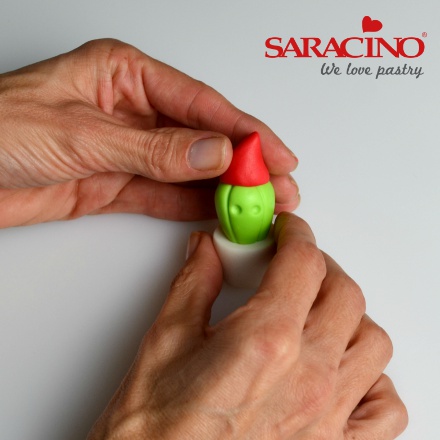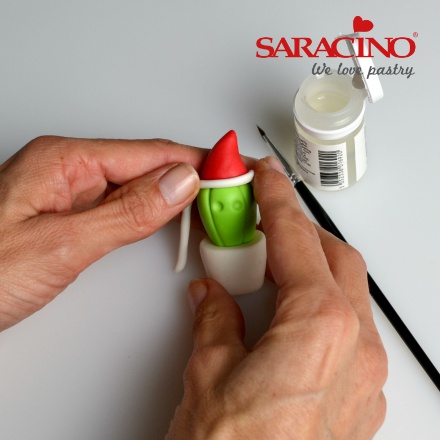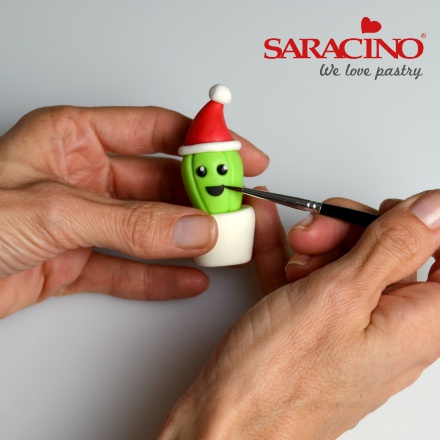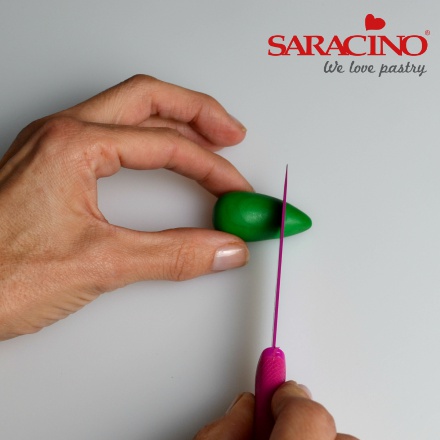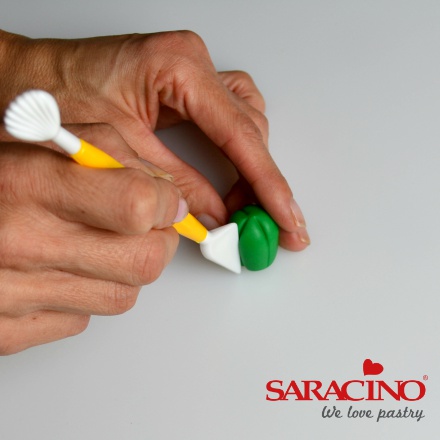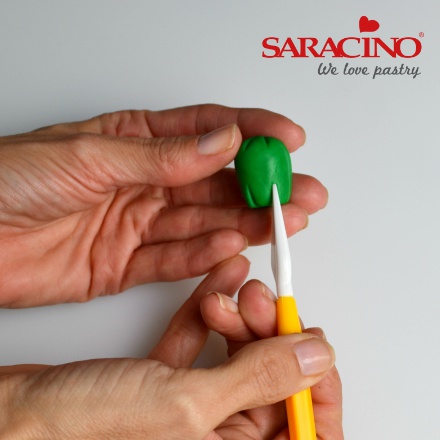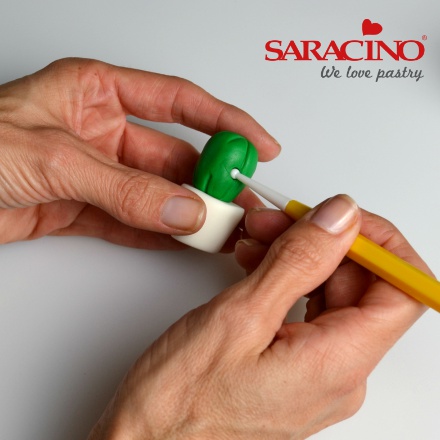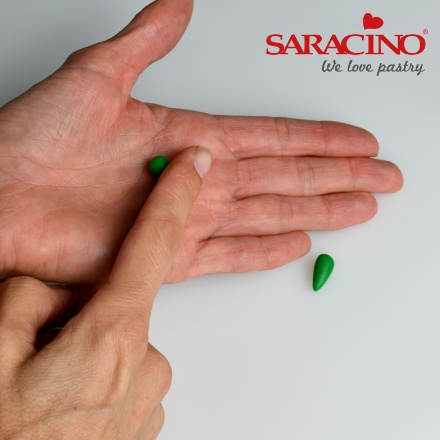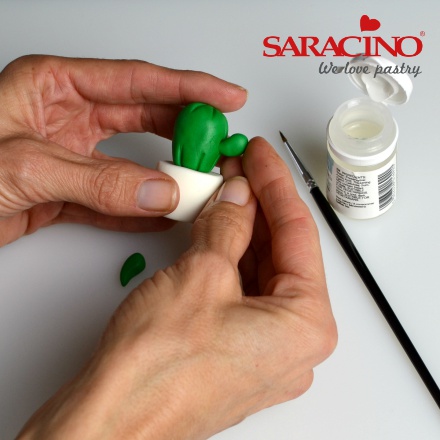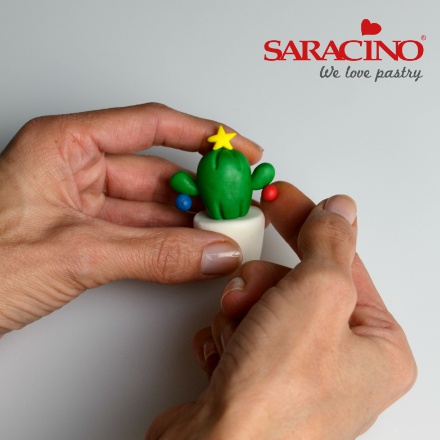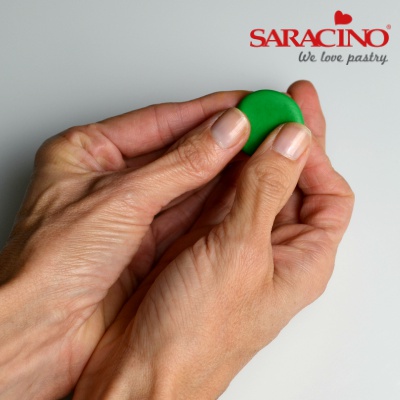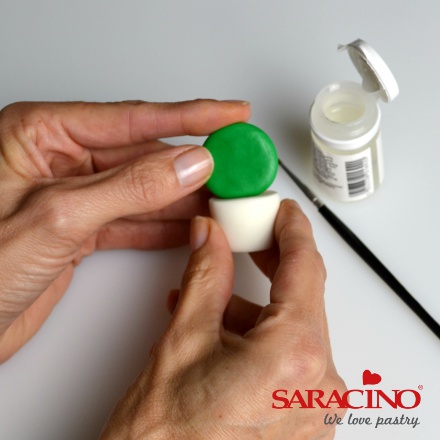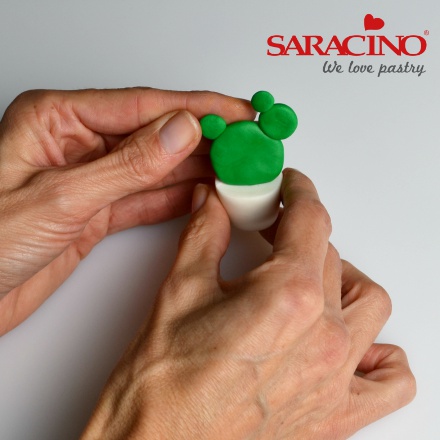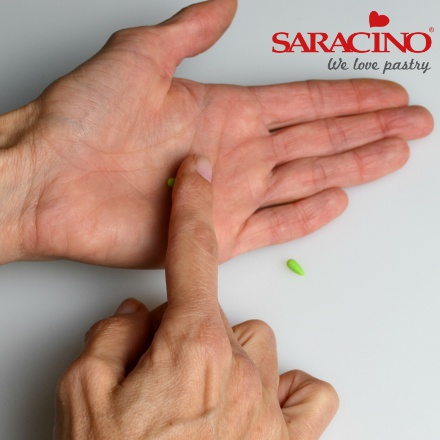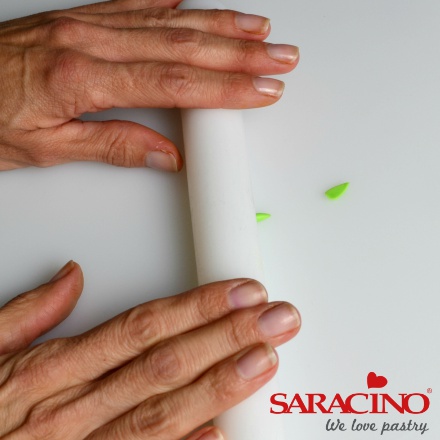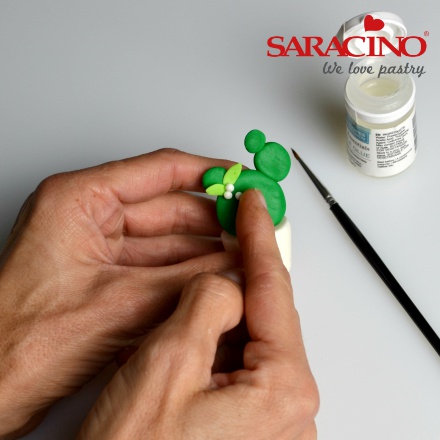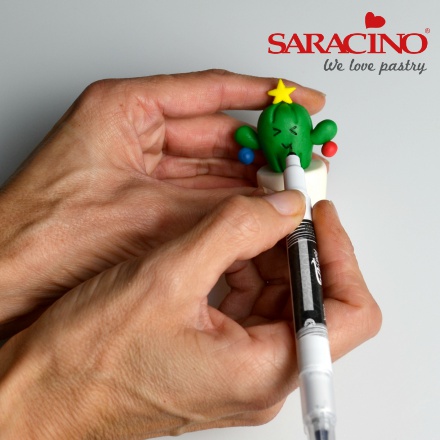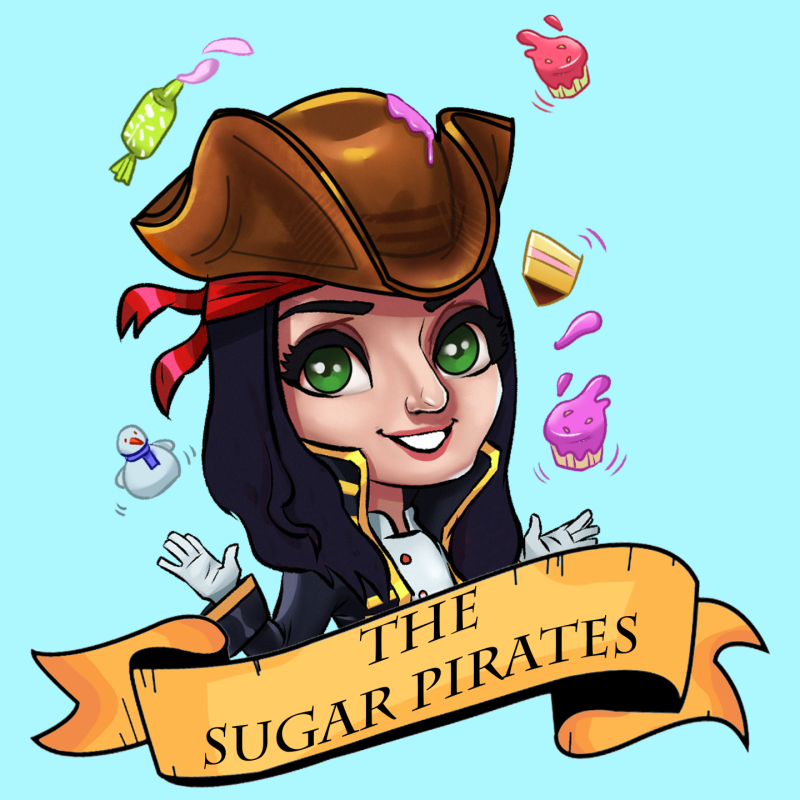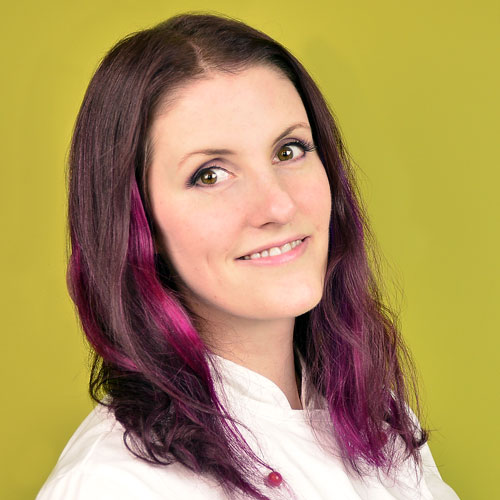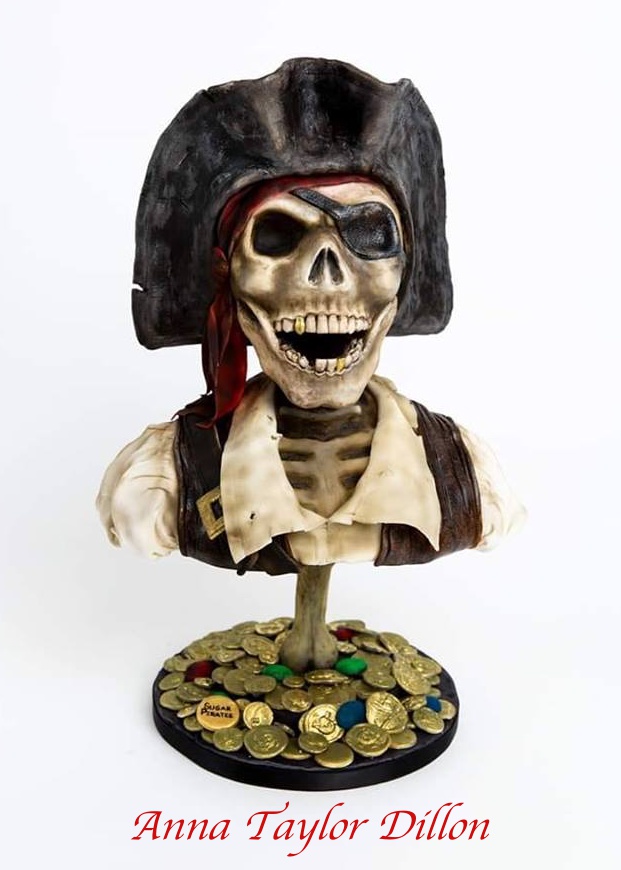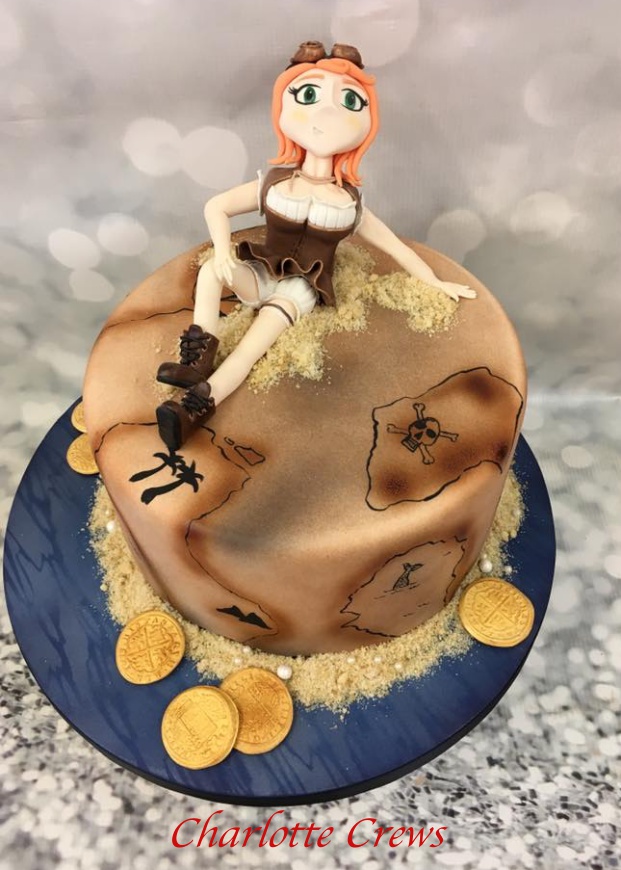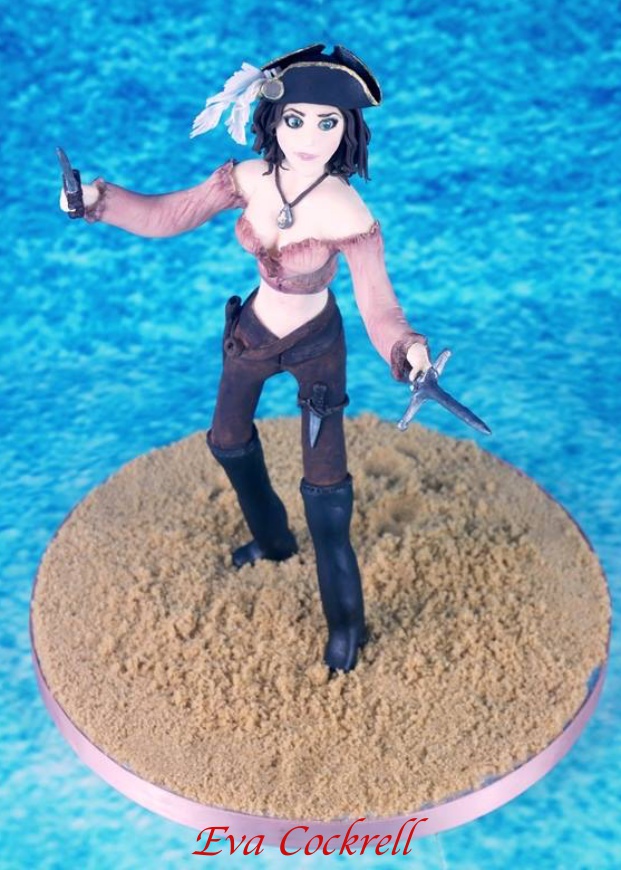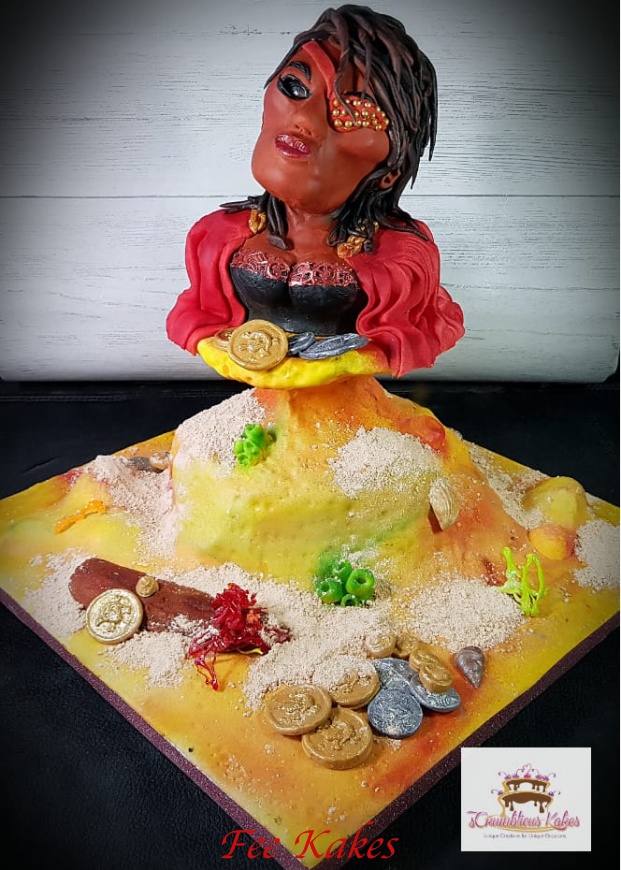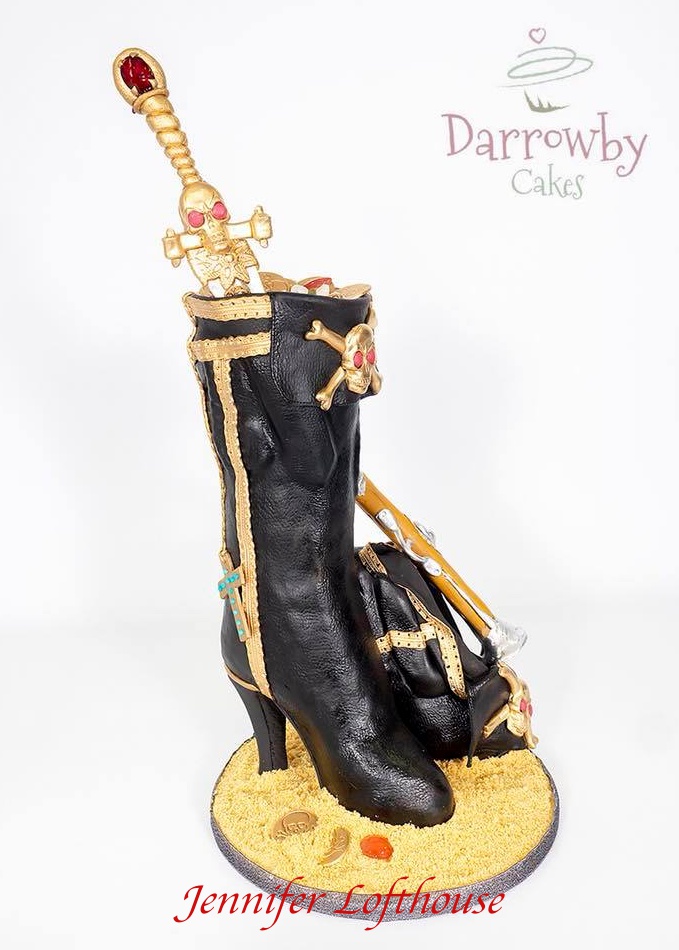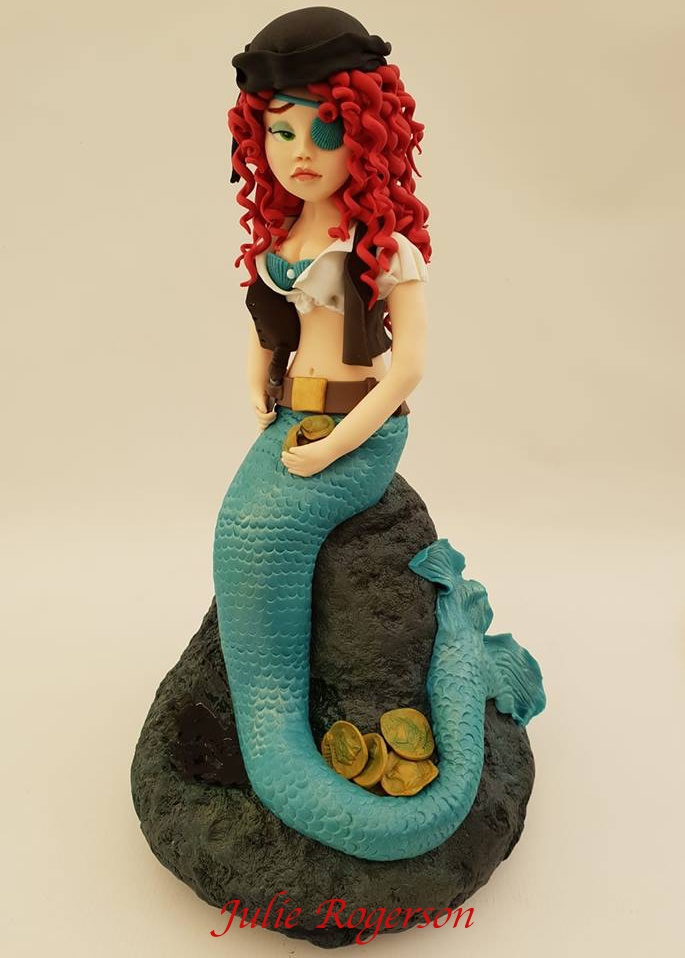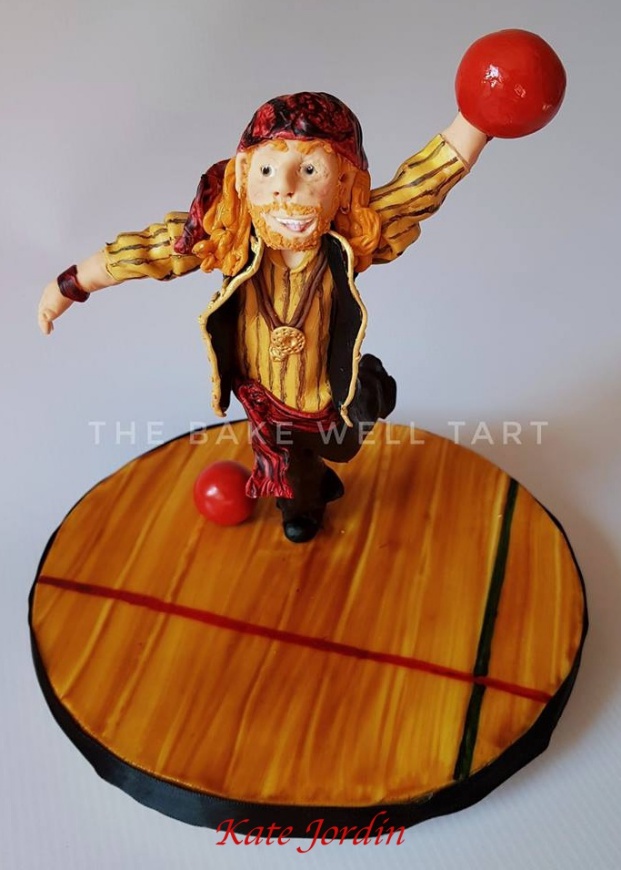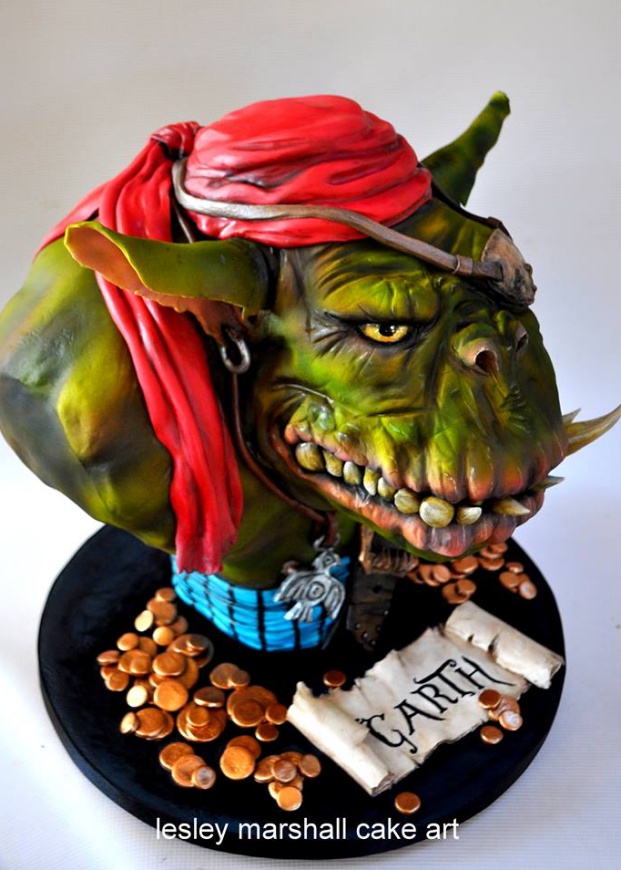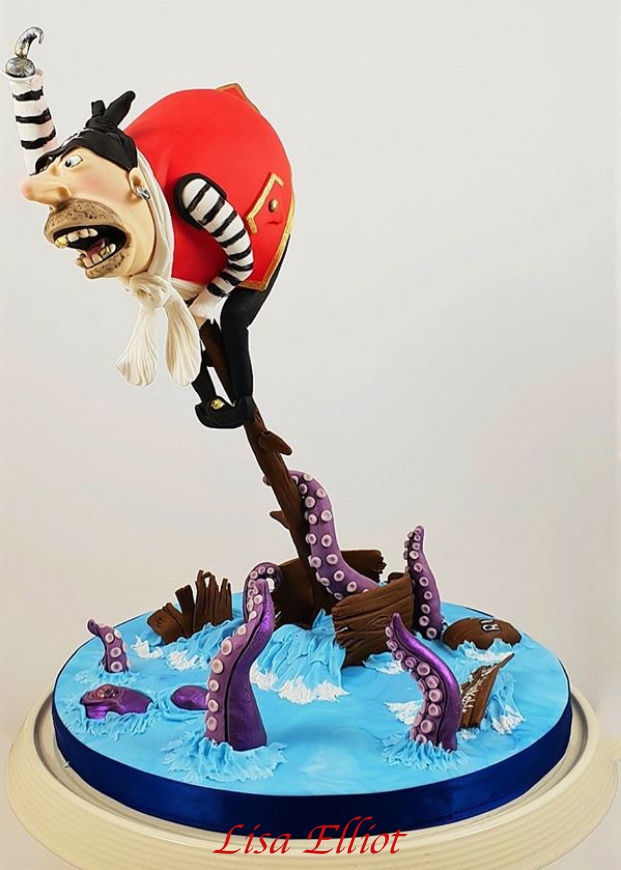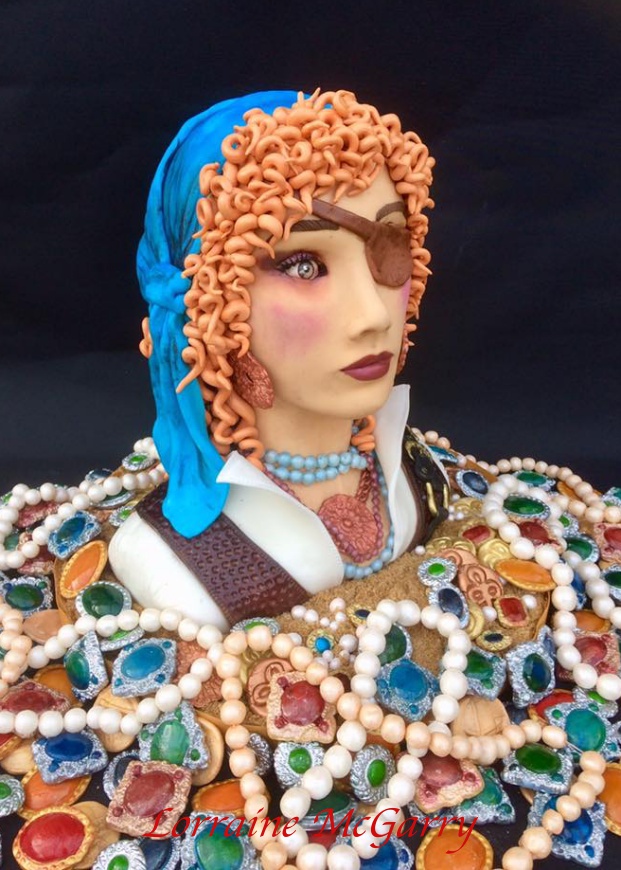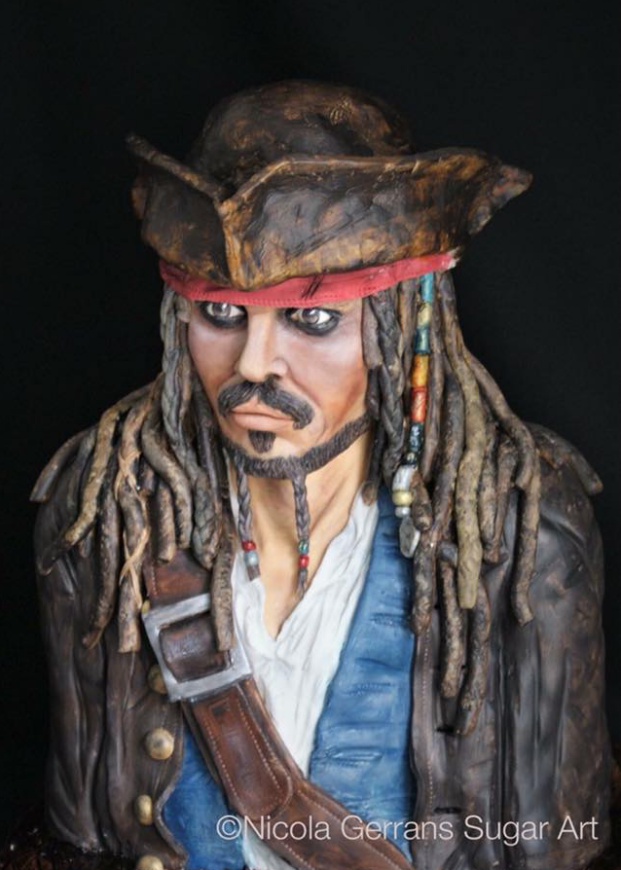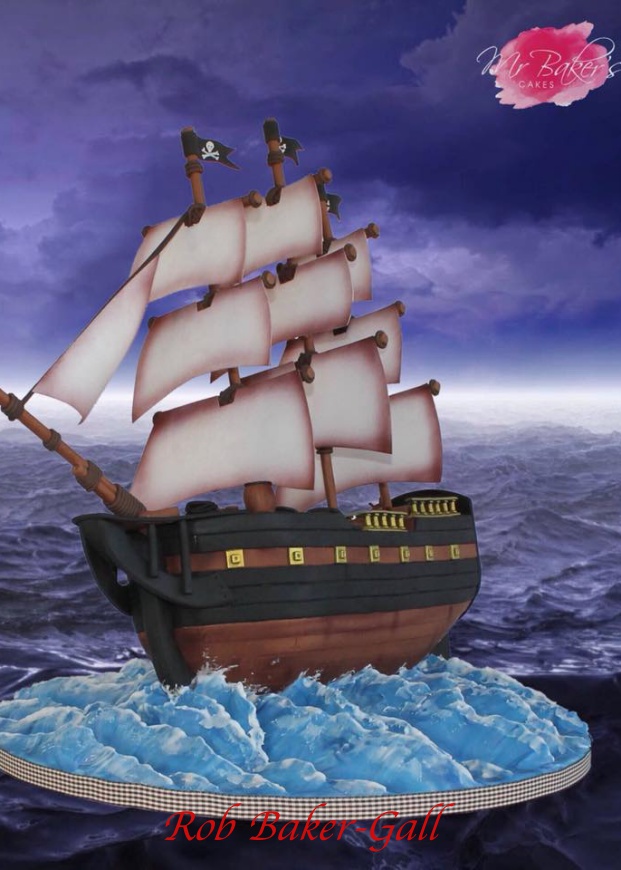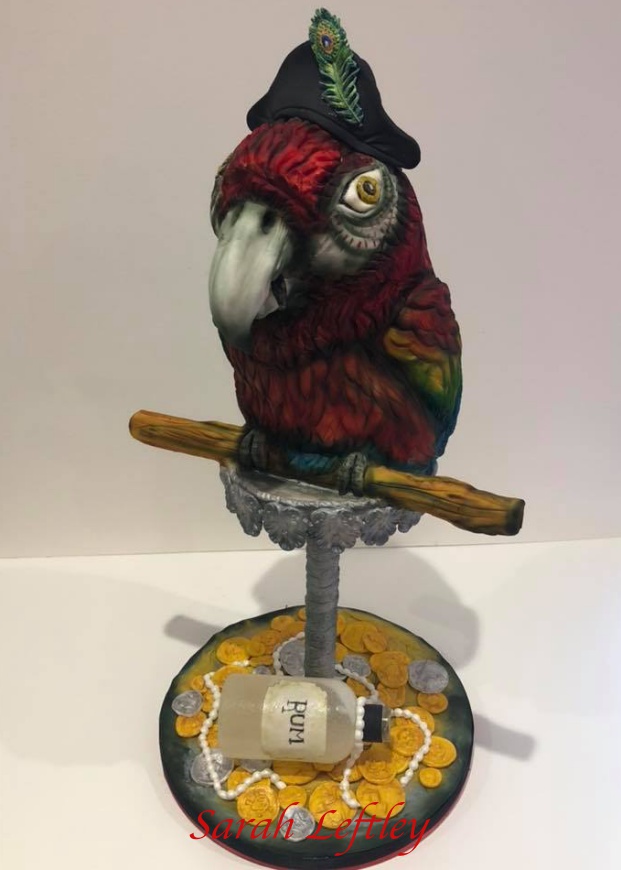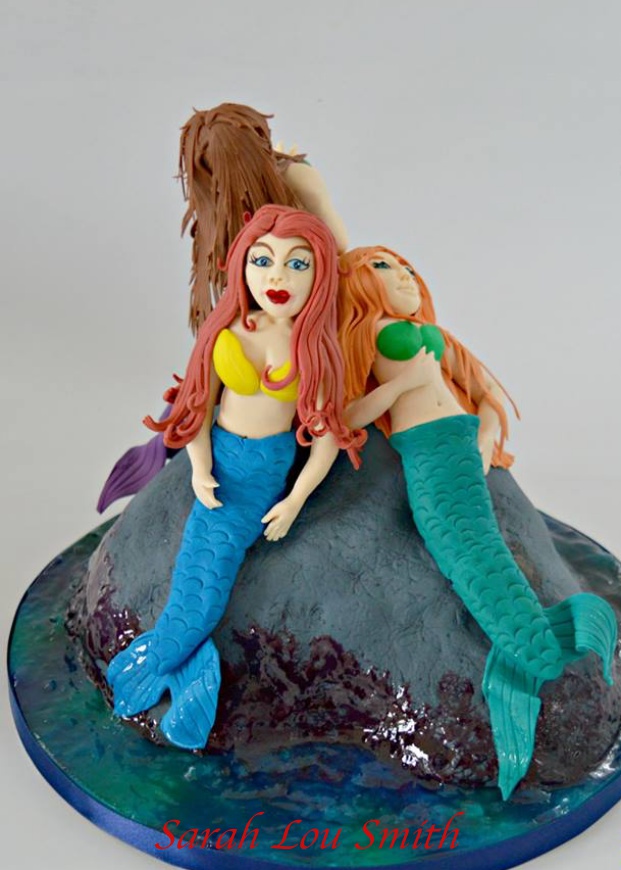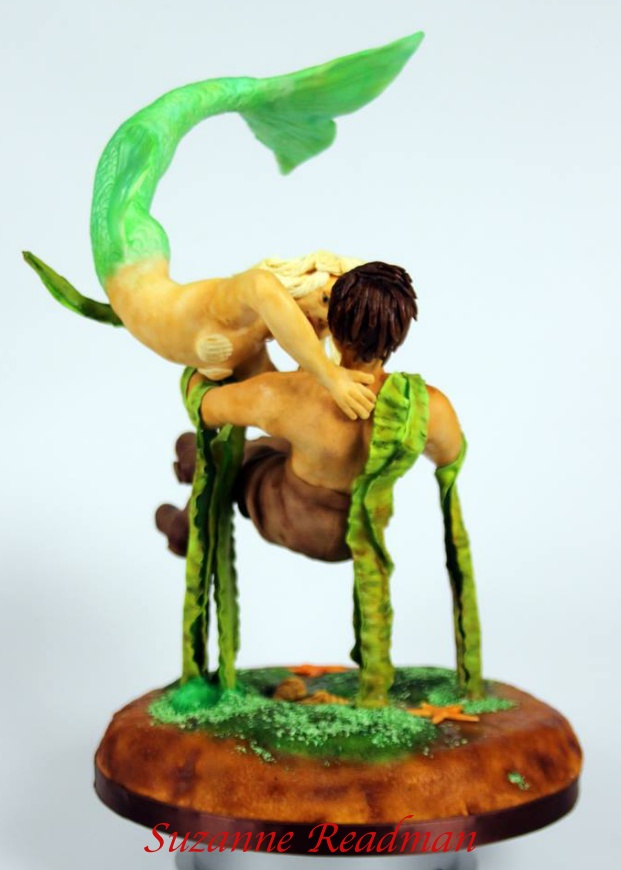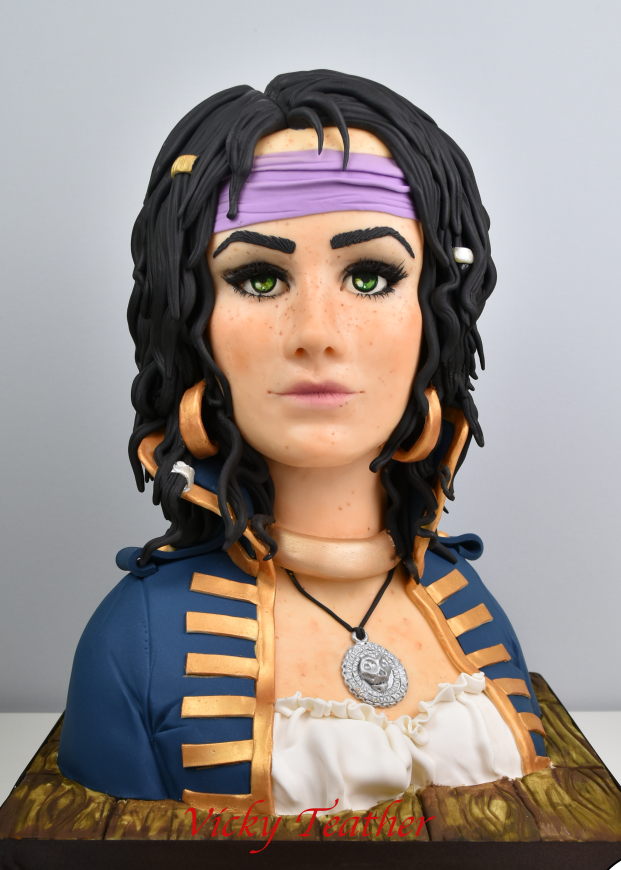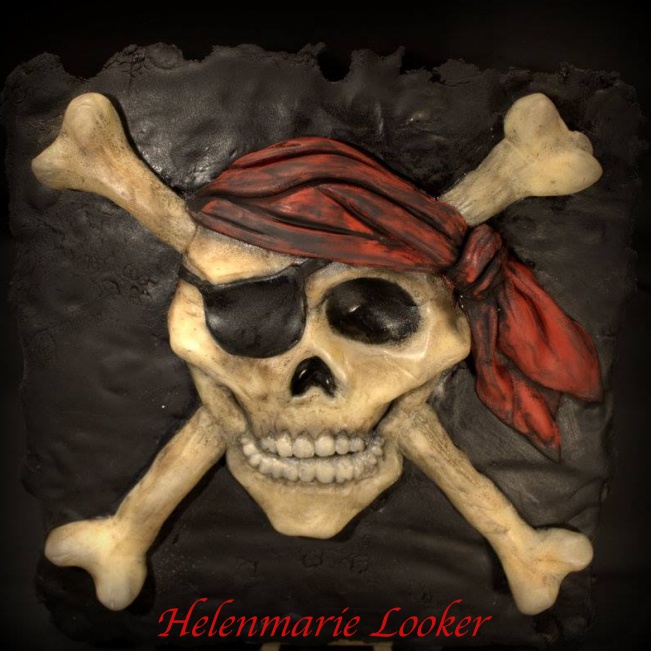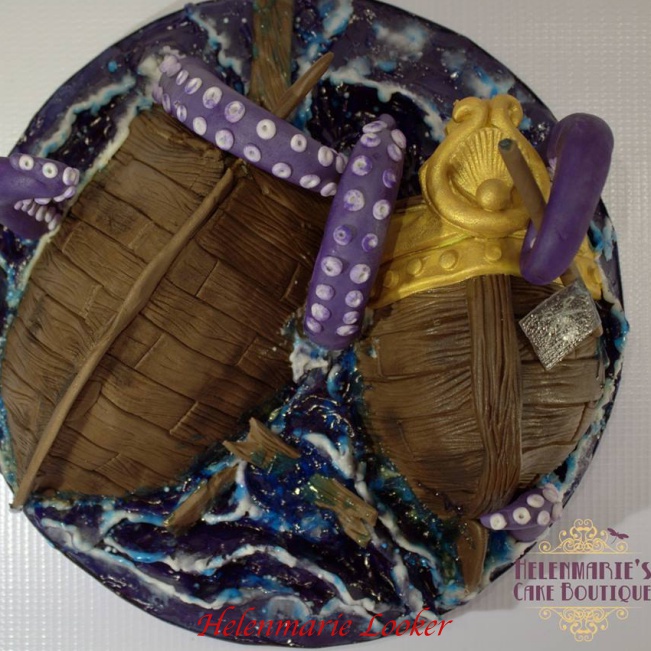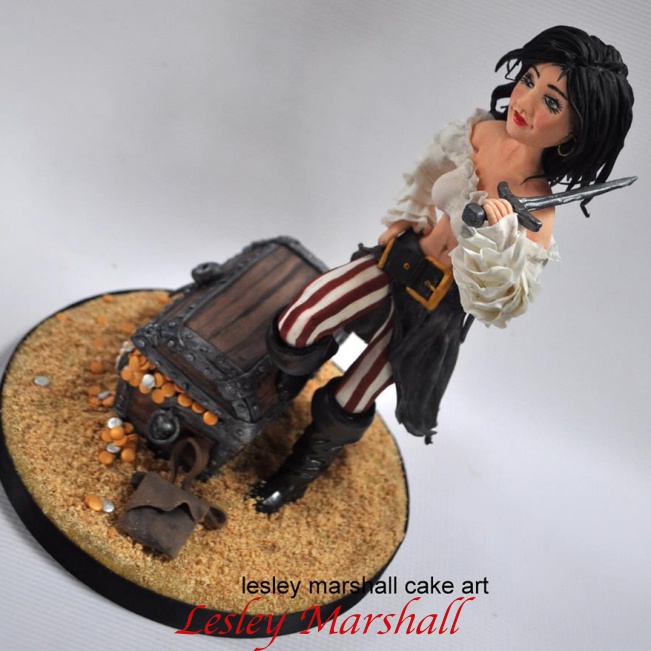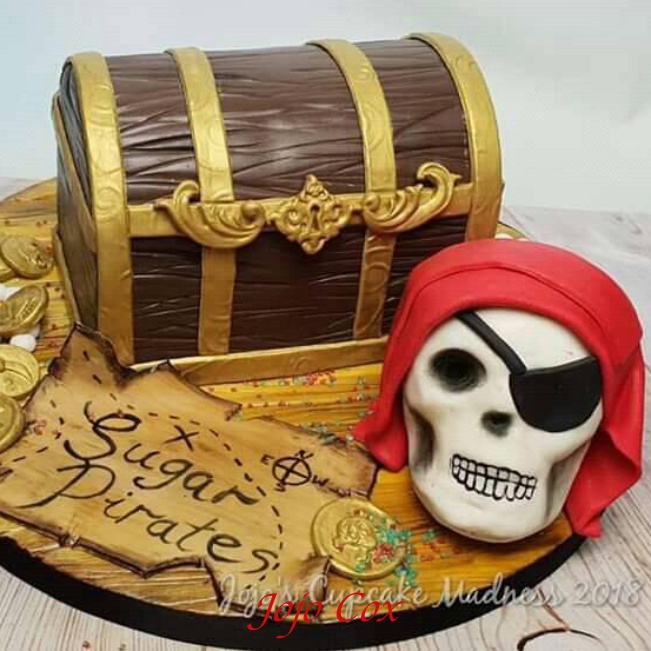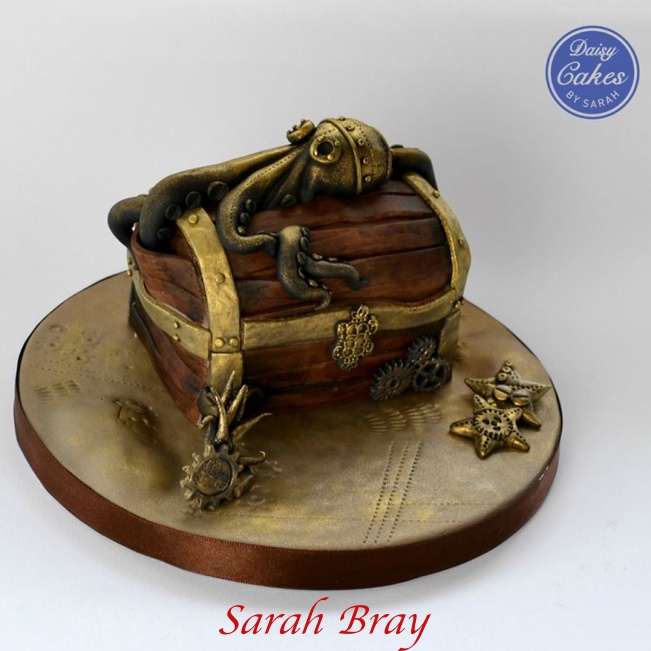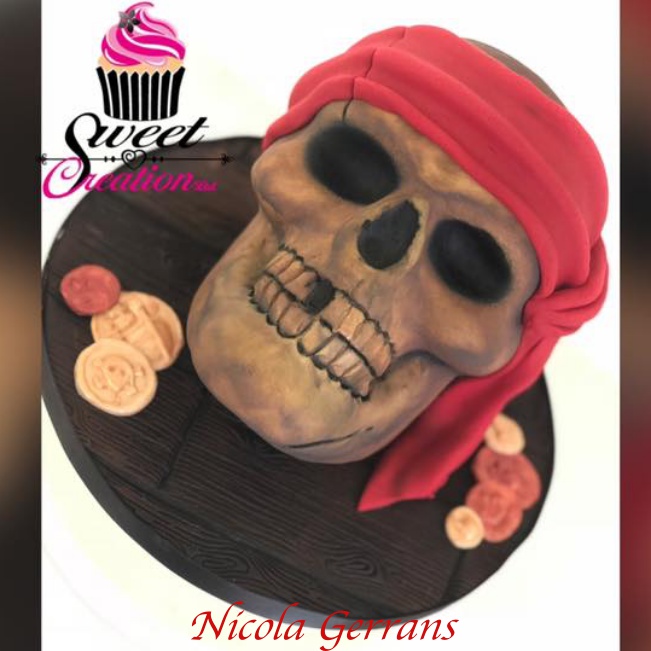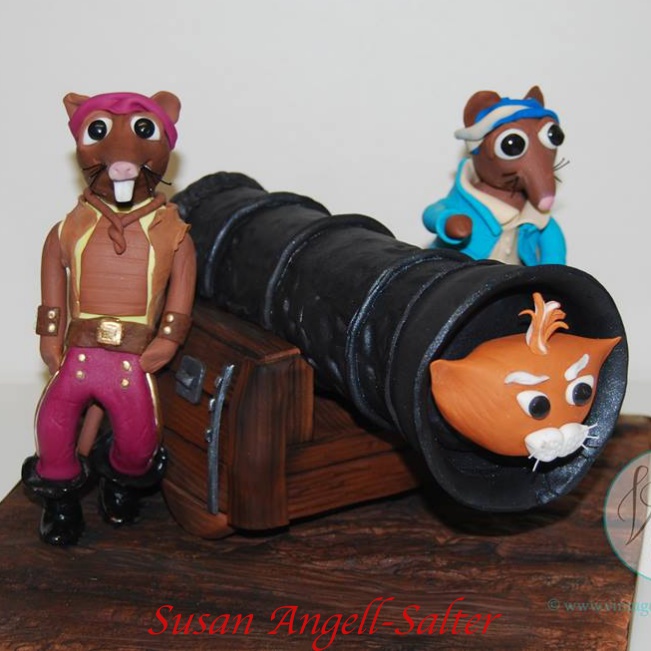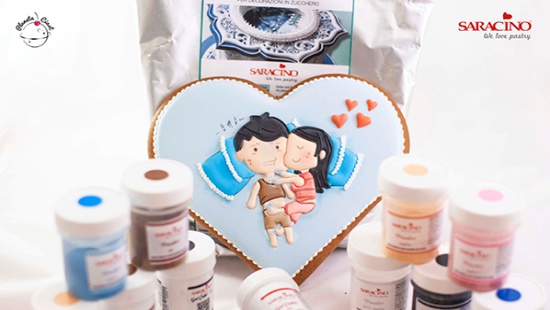
VALENTINE’S COOKIE

You will need:
- Saracino Royal Icing
- Sharp scissors
- Water
- Skewer
- Thin precise brush
- Small soft brush
- Icing bags
- Saracino gel colours: skin, red, brown, black
- Saracino powder colours: white, skin, pink, light blue, blue, brown, black
- Ready baked gingerbread

Step 1
Measure 250 grams of Saracino Royal icing, add 50 grams of water, mix intensively with a spoon or in a food mixer. The icing you are creating will be perfect for filling backgrounds on your gingerbread.

Step 2
Put a small amount of icing into a bowl and add Saracino blue powder coloring. Add smaller amount first and add gradually to achieve the perfect shade.

Step 3
Mix the icing until the coloring completly desolves. Well-mixed frosting with a dye should be smooth and without lumps. Advice: Put leftover icing in a sealed container or put a wet cloth on top of the bowl.

Step 4
Put one of your gingerbread on a board and fill a piping bag with the coloured royal icing.

Step 5
Cut out a small hole on the sharp end of the icing bag. Pipe a line around the edge of the gingerbread.

Step 6
Run out between the piped line with coloured royal icing.

Step 7
The background will need about 2h to dry. Alternatively you can put it in the oven on 50 degrees celcius for around 10 minutes. The icing on the top will dry out, but will still be soft under the surface. While moving the gingerbread, DON’T touch the icing!

Step 8
After the icing dries out you can put other layers. You can easily draw a shape using a skewer.

Step 9
Put some white royal icing into a bowl and add one or two drops of Saracino skin tone gel colour.

Step 10
Fill an icing bag, cut out a little hole in the sharp end of the bag. Mark on the gingerbread face, hand and the leg of the character. Important: You can add other elements when the previous dries out.

Step 11
Mark the head of the second character and pipe the outline.

Step 12
Run out the head shape with icing after the first head has dried out slightly.

Step 13
Pipe the neck and an ear.

Step 14
Put some white royal icing in a bowl and add a drop of Saracino red gel coloring. Mix with a spoon. Put half of the prepared icing in an icing bag. Add another one or two drops of the red gel coloring into the bowl, mix it and put it in another icing bag. This way you will achieve two different shades of pink.

Step 15
Repeat steps from the 14th point, but with Saracino brown gel coloring.

Step 16
Repeat steps from the 14th point, but with Saracino black gel coloring. Add more drops to the icing as we want a strong black colour.

Step 17
Draw a shirt with the pink icing, a t-shirt with dark brown and the pants with light brown. Leave it to dry.

Step 18
Draw the first trouser leg with light pink icing, hands and legs with nude color icing.

Step 19
Draw the second trouser leg with light pink icing, hands and legs with the nude color icing.

Step 20
With the nude color icing, pipe the leg and the belly.

Step 21
Pipe the hair outline with the black icing.
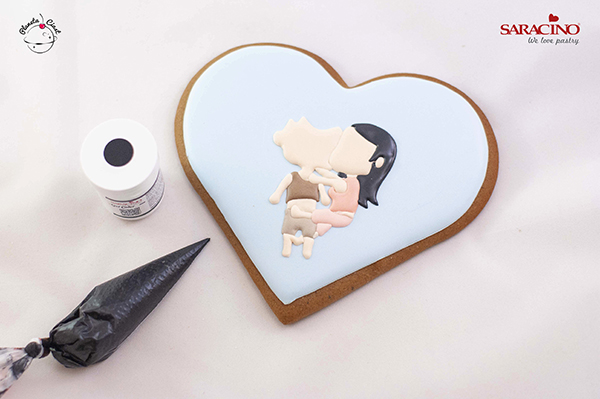
Step 21
Run out the hair with black royal icing.

Step 22
Pipe the hairline of the second character.

Step 23
Run out the hair with black royal icing.

Step 24
Put the light blue icing into a bowl and add a little more Saracino blue powder to achieve stronger colour. Mix it, put into the icing bag and pipe the pillows. Advice: You can also use the gel colour to colour your icing.

Step 25
Put the remaining pink icing into a bowl and add more red gel colour to get a deep red. Mix it well and put it into an icing bag and pipe hearts.

Step 26
Measure 125g of Saracino Royal icing and add 18 g of water. Mix it well. You’ll get icing perfect to make edge bead. Put it into an icing bag and pipe the beads around the gingerbread.

Step 27
The gingerbread should look like this with the decorative bead around the edge.

Step 28
Take blue powder colour and dust the hands of the characters with a brush to achieve effect of cold hands and feet. Important: Don’t put the colour direct onto the icing without dabbing it on a paper towel first.
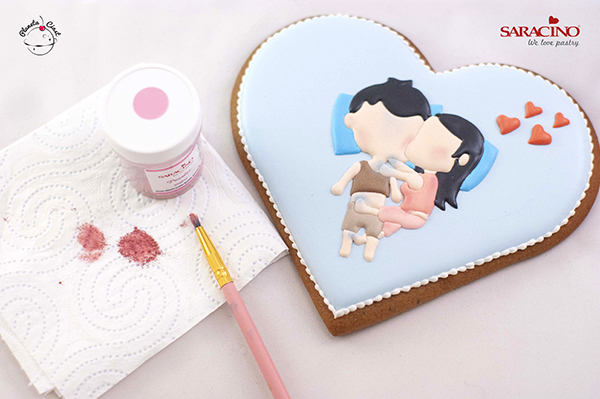
Step 29
Repeat step 28 with pink powder colour, dust the hoodie, the trousers and the cheeks of the characters.

Step 30
Use the brown powder colour to add shadows on the hoodie and the trousers. Important: If you have only one brush, wash it and dry it after every usage.

Step 31
Mix the brown powder colour with water or clear alcohol using a small brush. Draw around the hoodie and the trousers.

Step 32
Use the diluted brown colour to paint eyes, and use the nude color to draw around hands and the legs.

Step 33
Add one more pillow next to both sides of characters. Use the diluted white powder colour to draw lines around the characters as shown on the photograph.

Step 34
Dilute the black powder colour and draw symbols above the characters. Use the white thick icing (one you have used to pipe decorative beads around the edges of the gingerbread) to pipe a patern around the pillows.

Step 35
With pink diluted powder colour paint around the trousers, shirt and add stripes on the shirt.

Step 38
Put the rest of the white icing into a bowl and add a tiny bit of black icing, mix it and put into another bag. Pipe around the hair. Dust some shadows with blue powder colour.

Step 37
Da Da your gingerbread is ready to give to a loved one.




